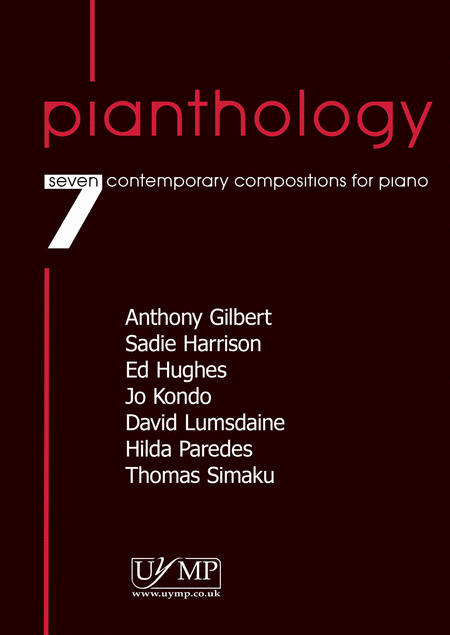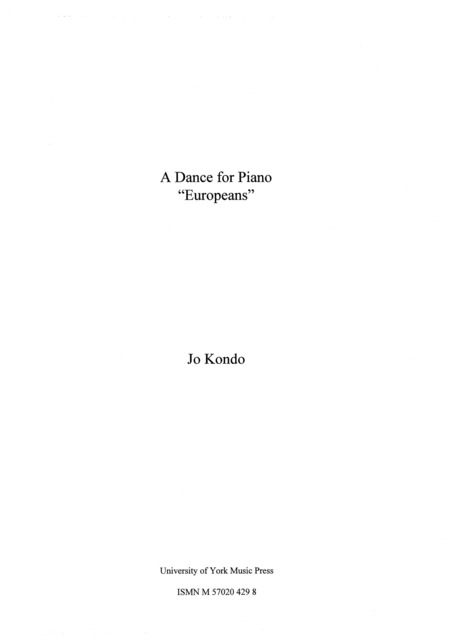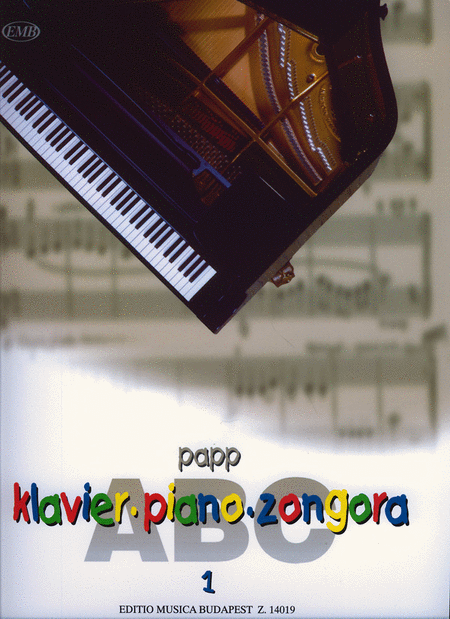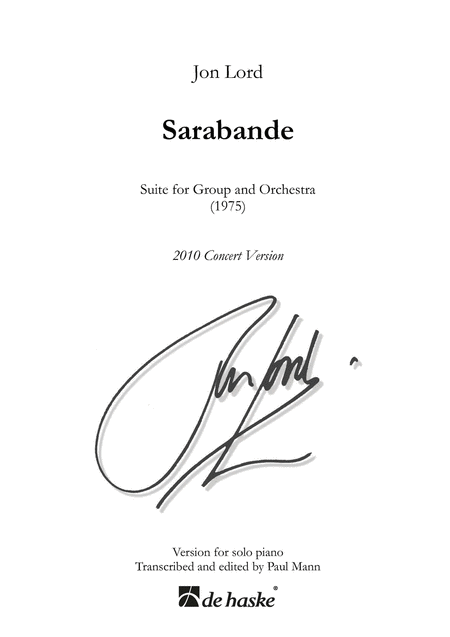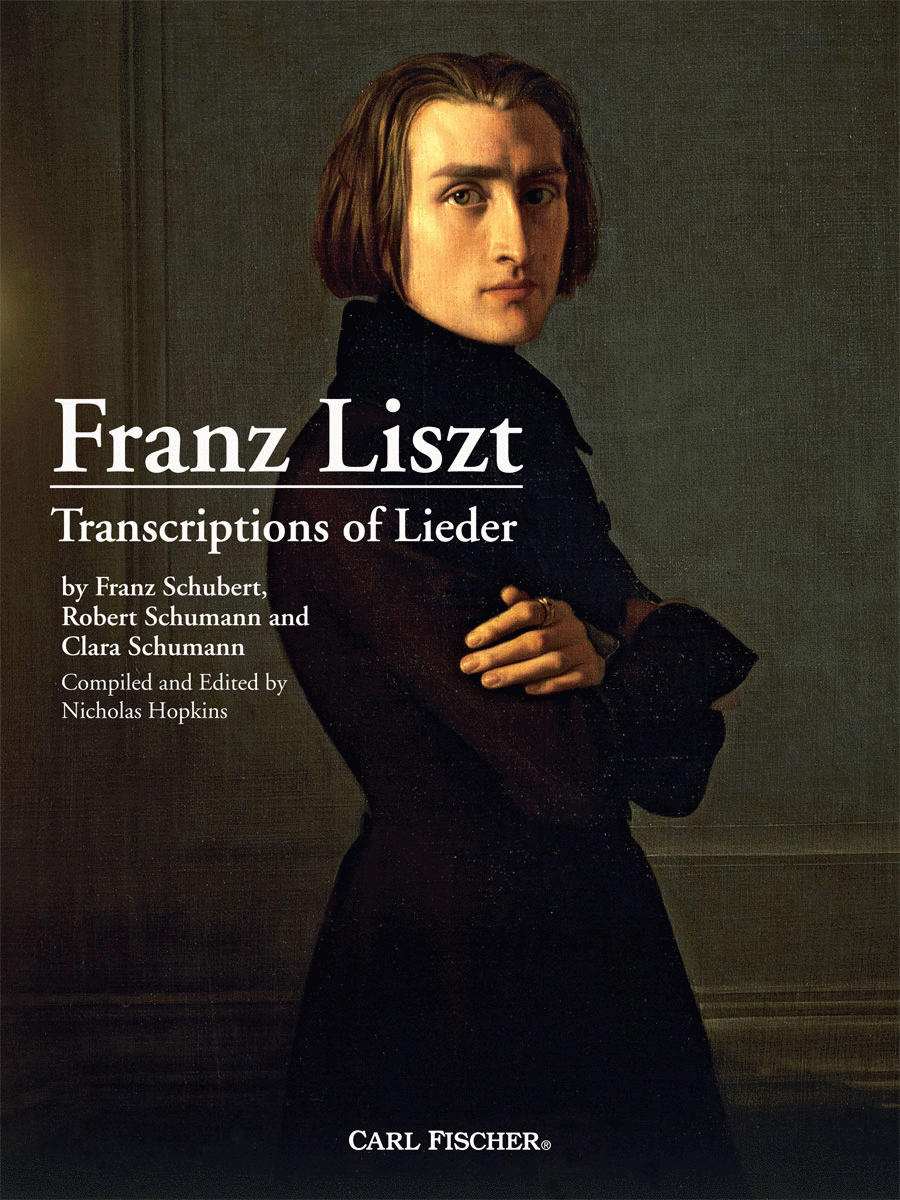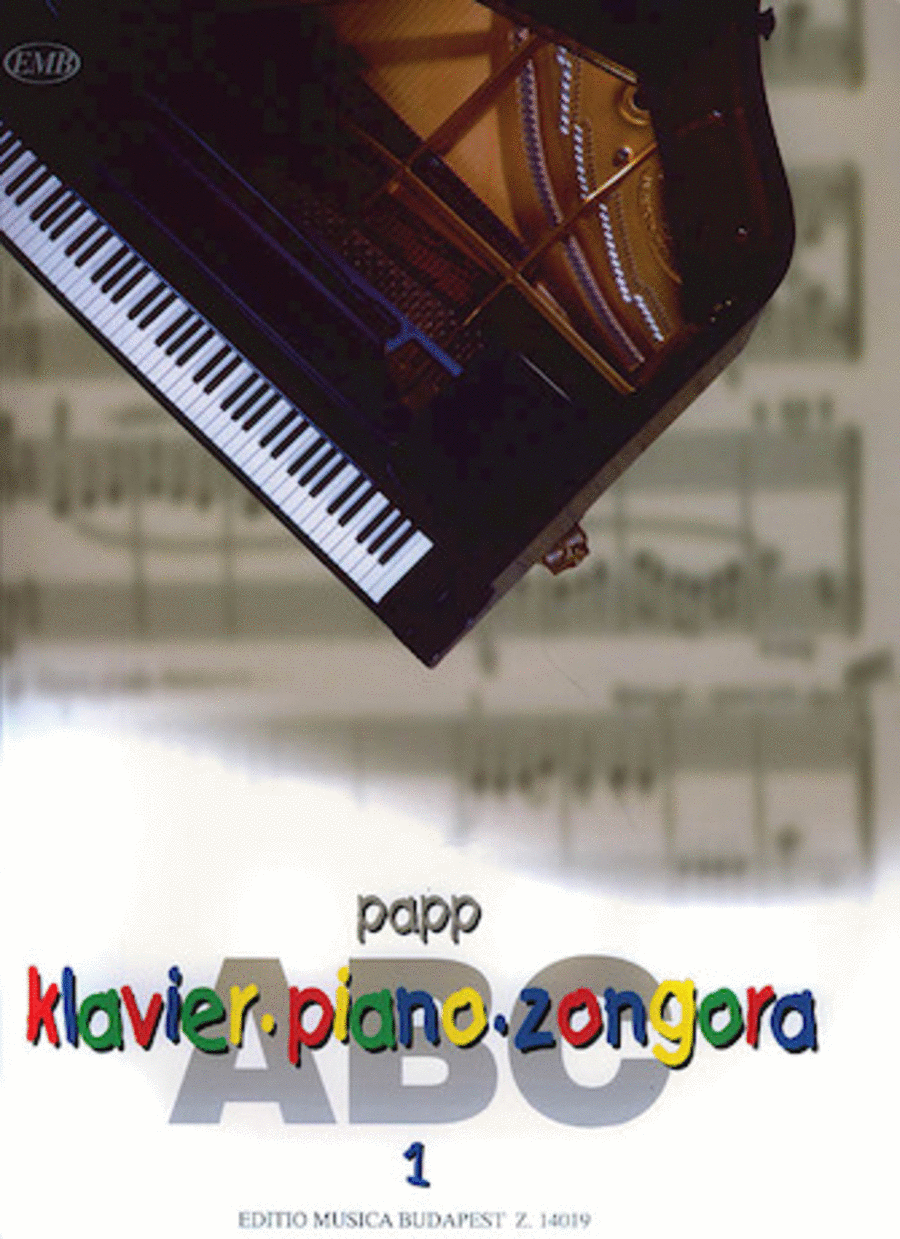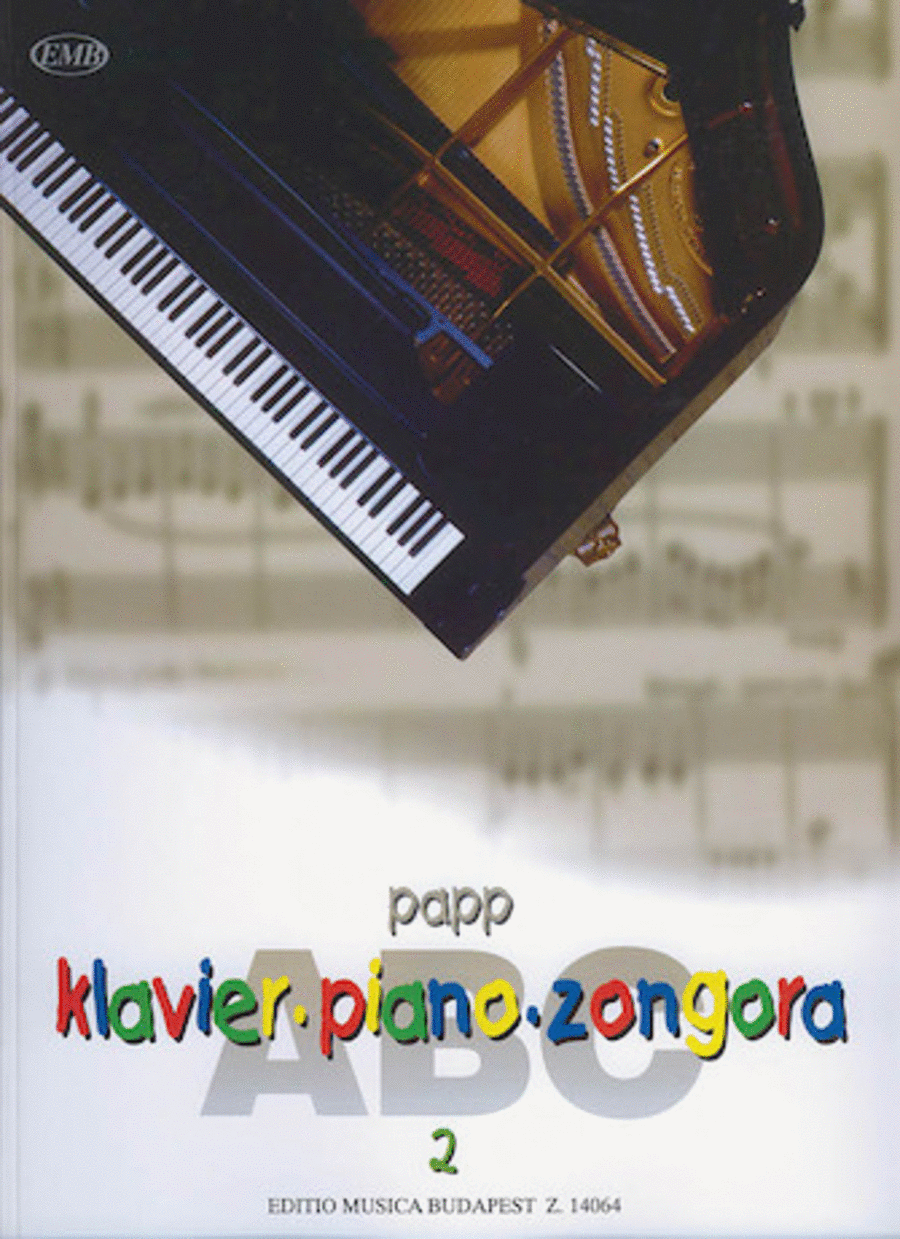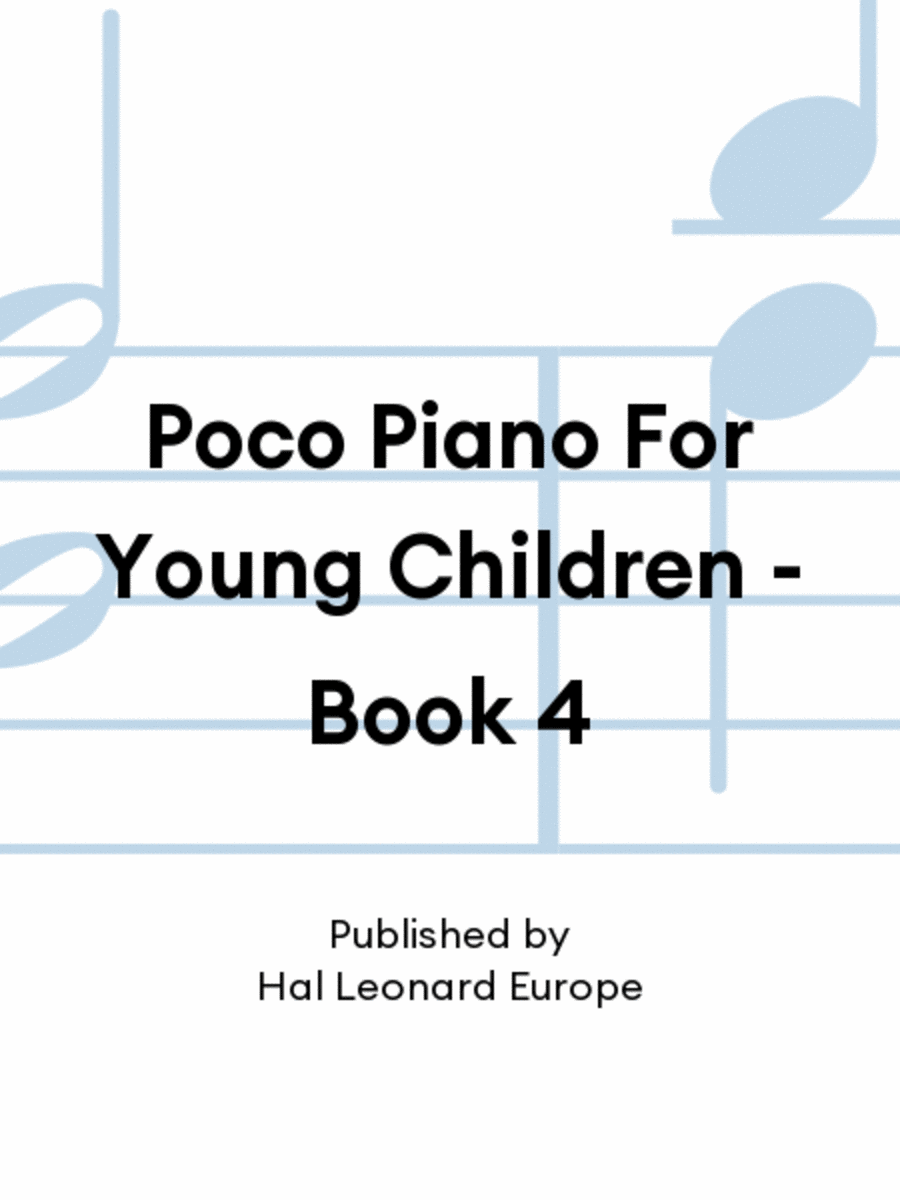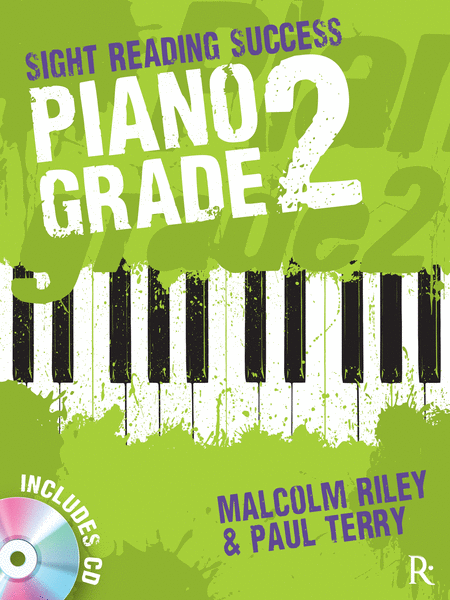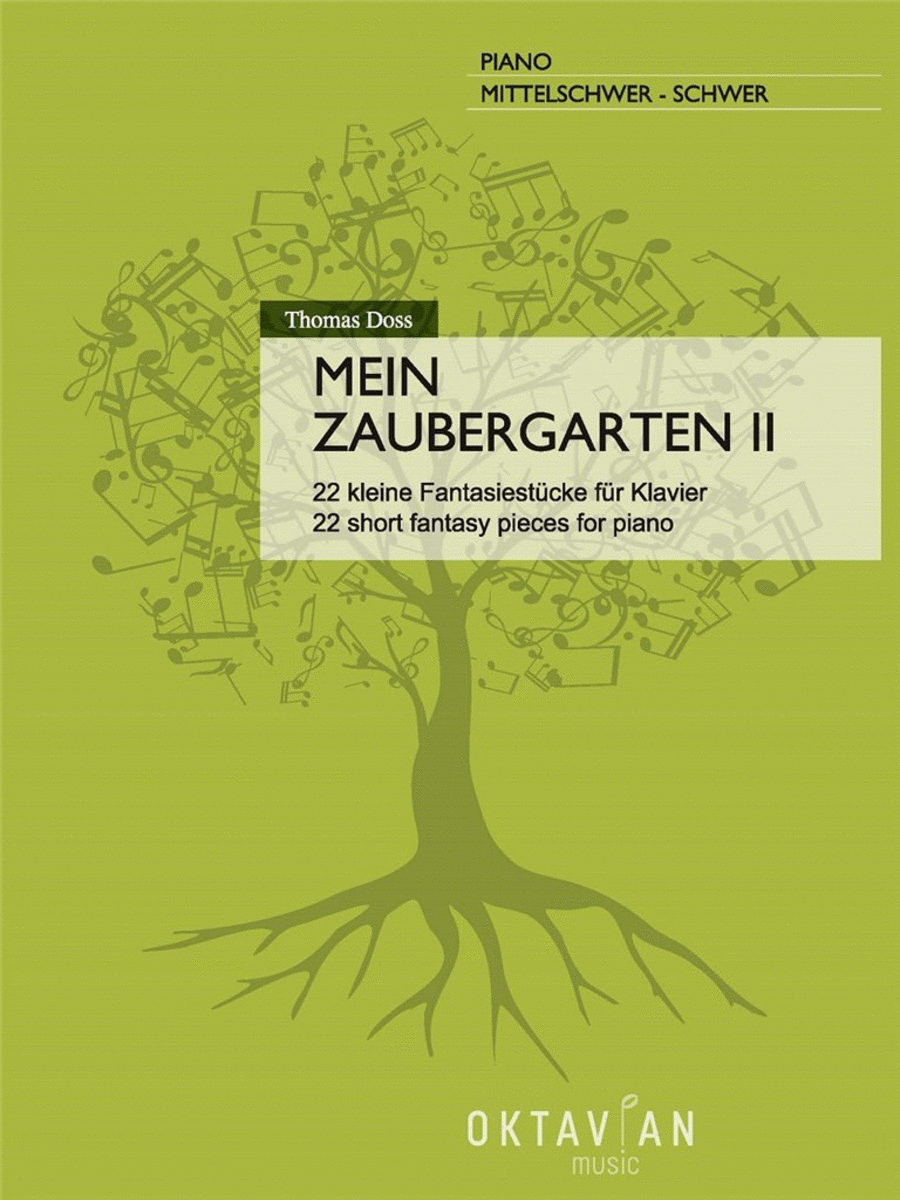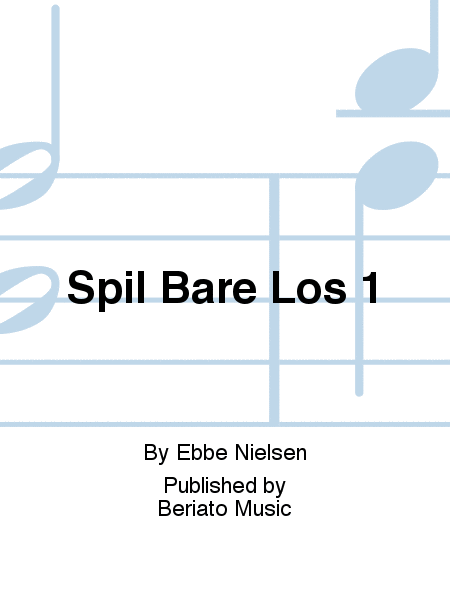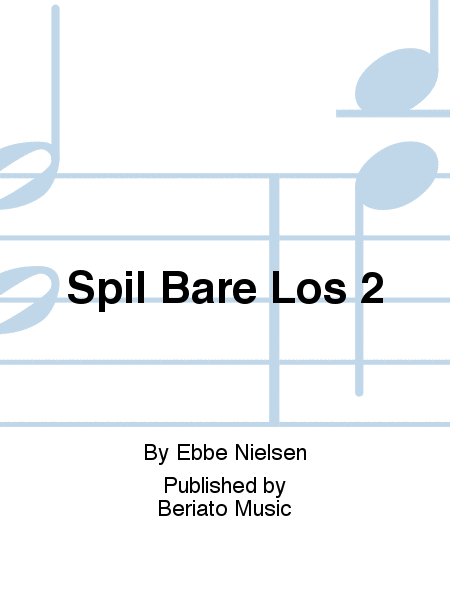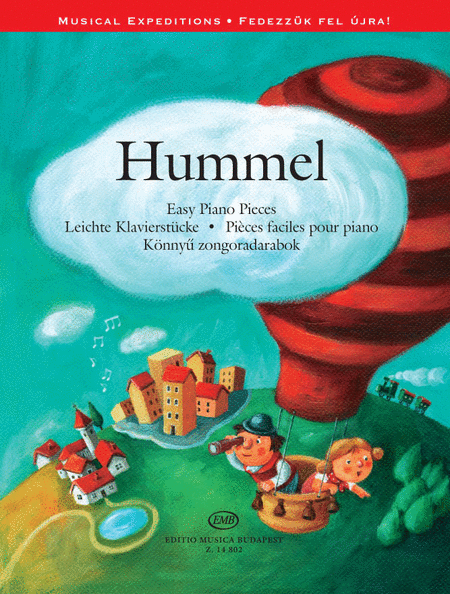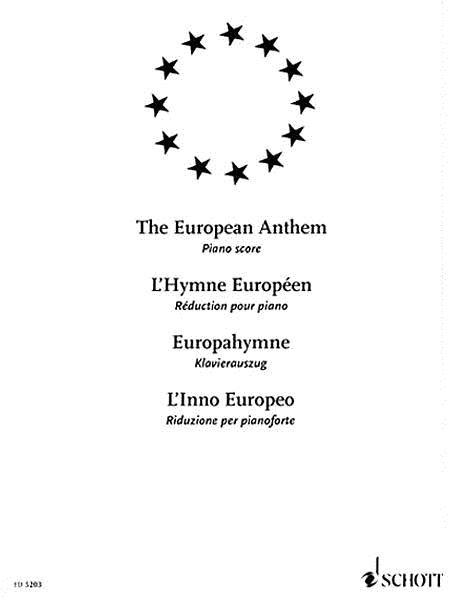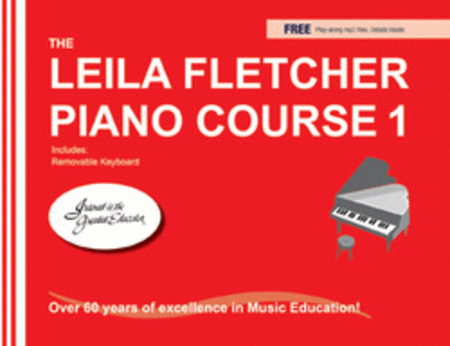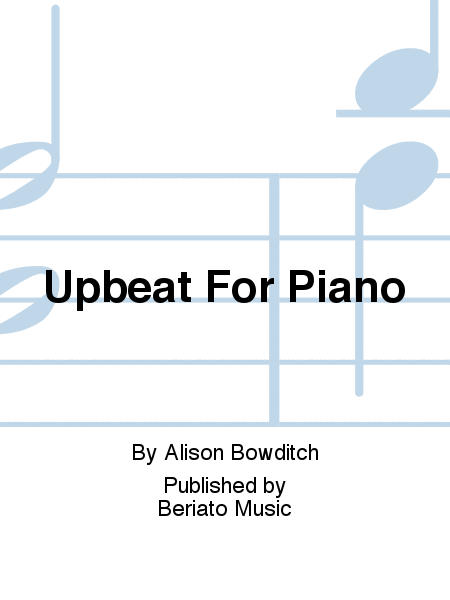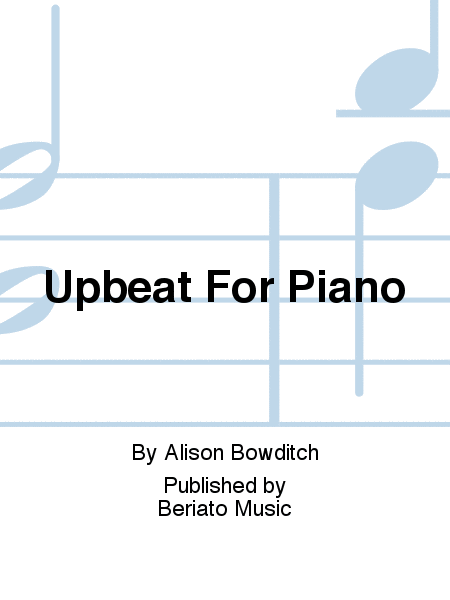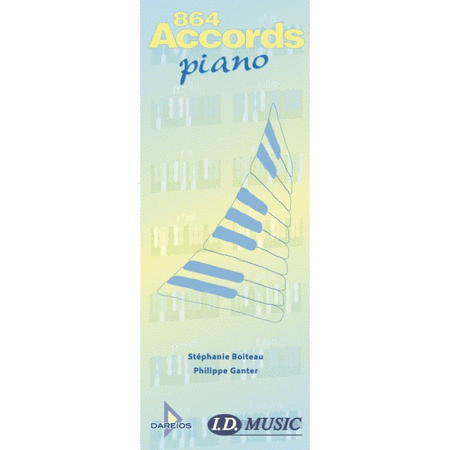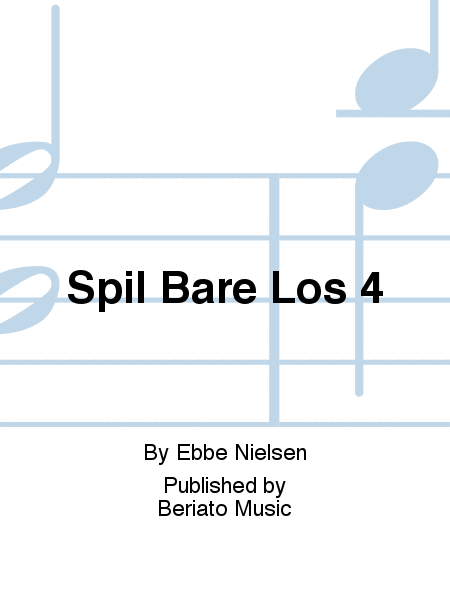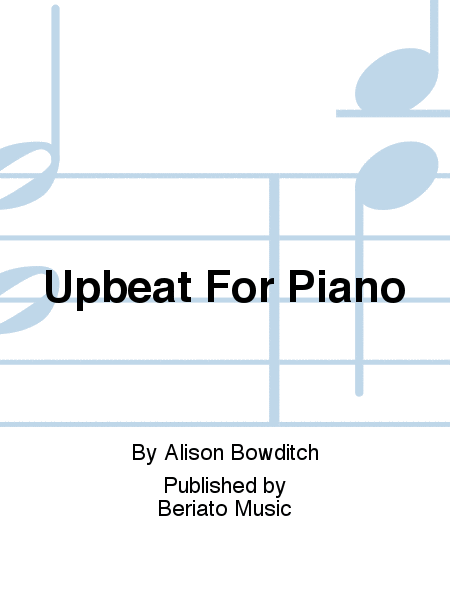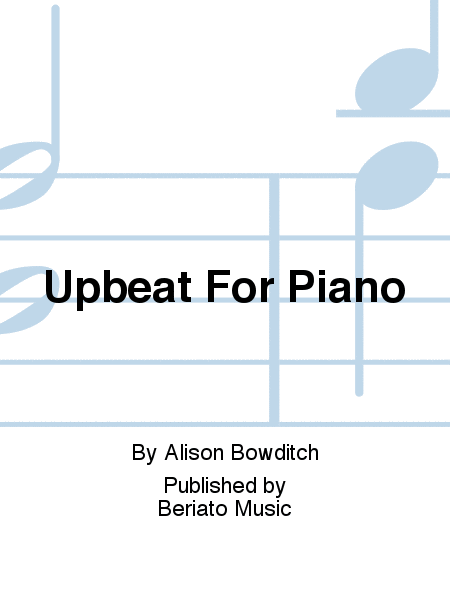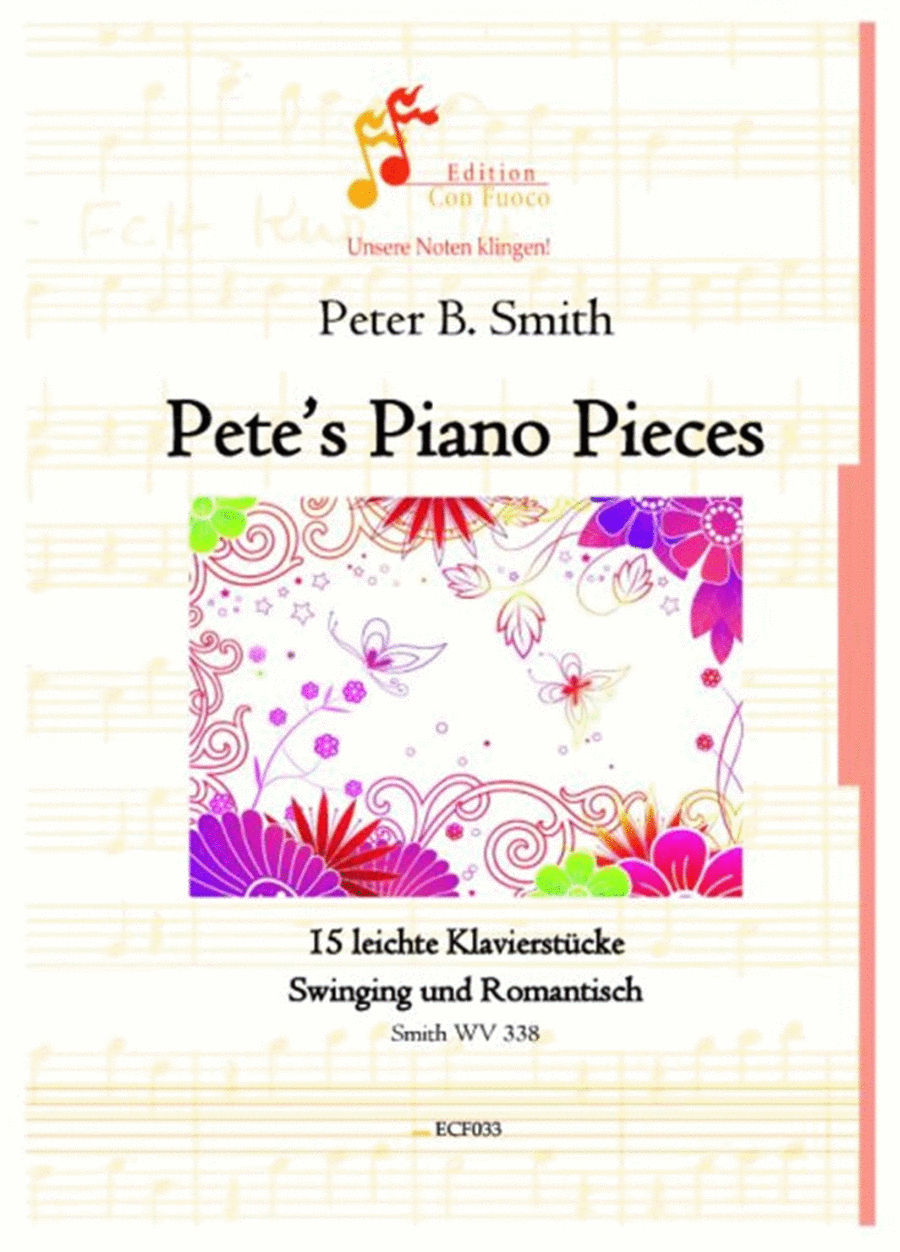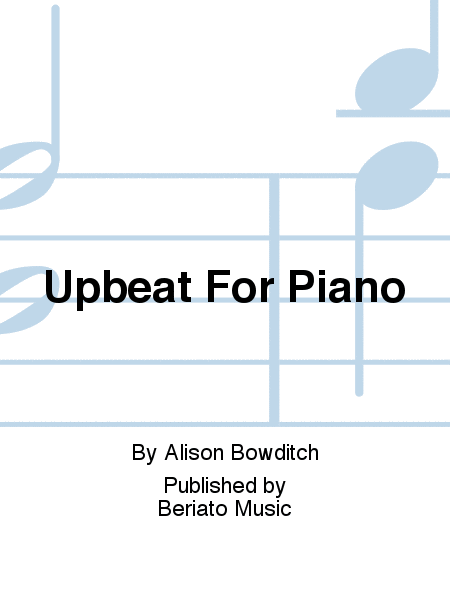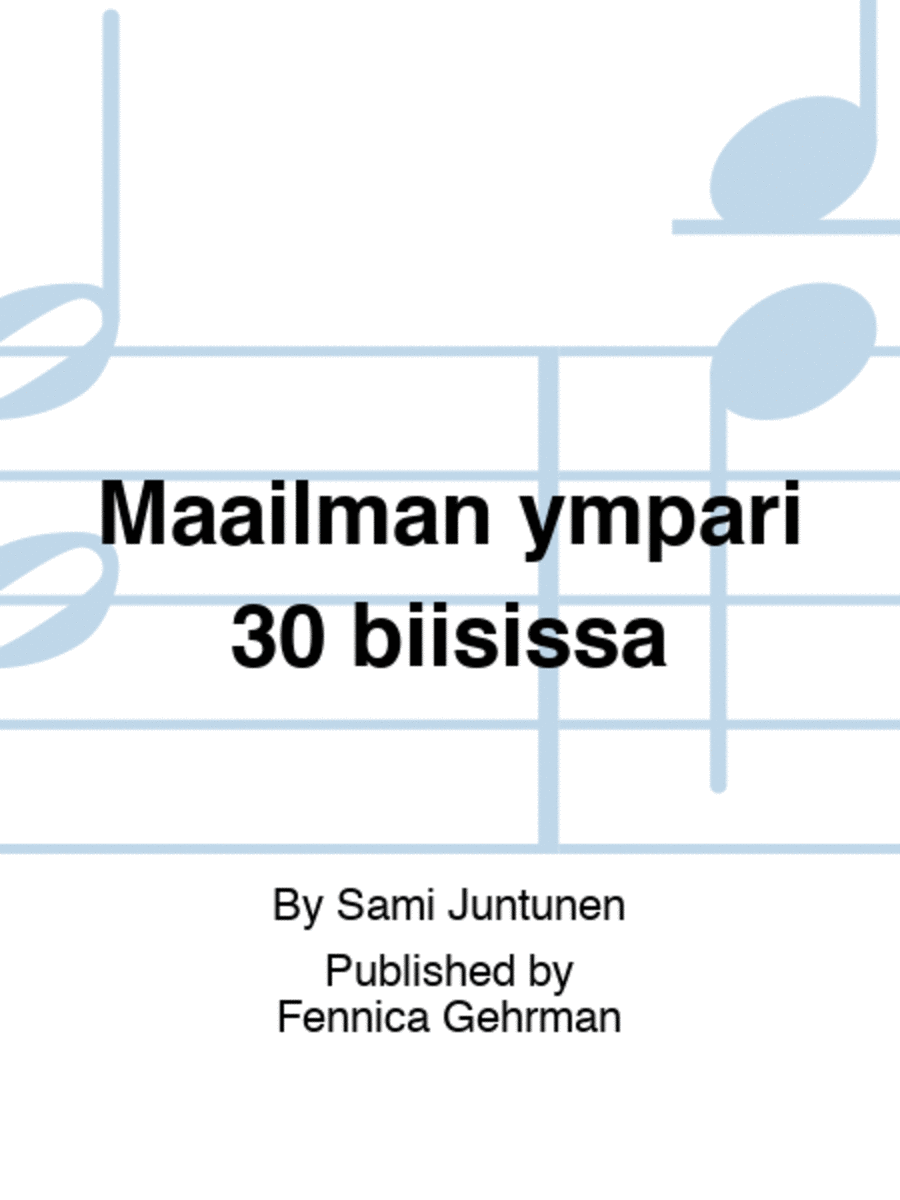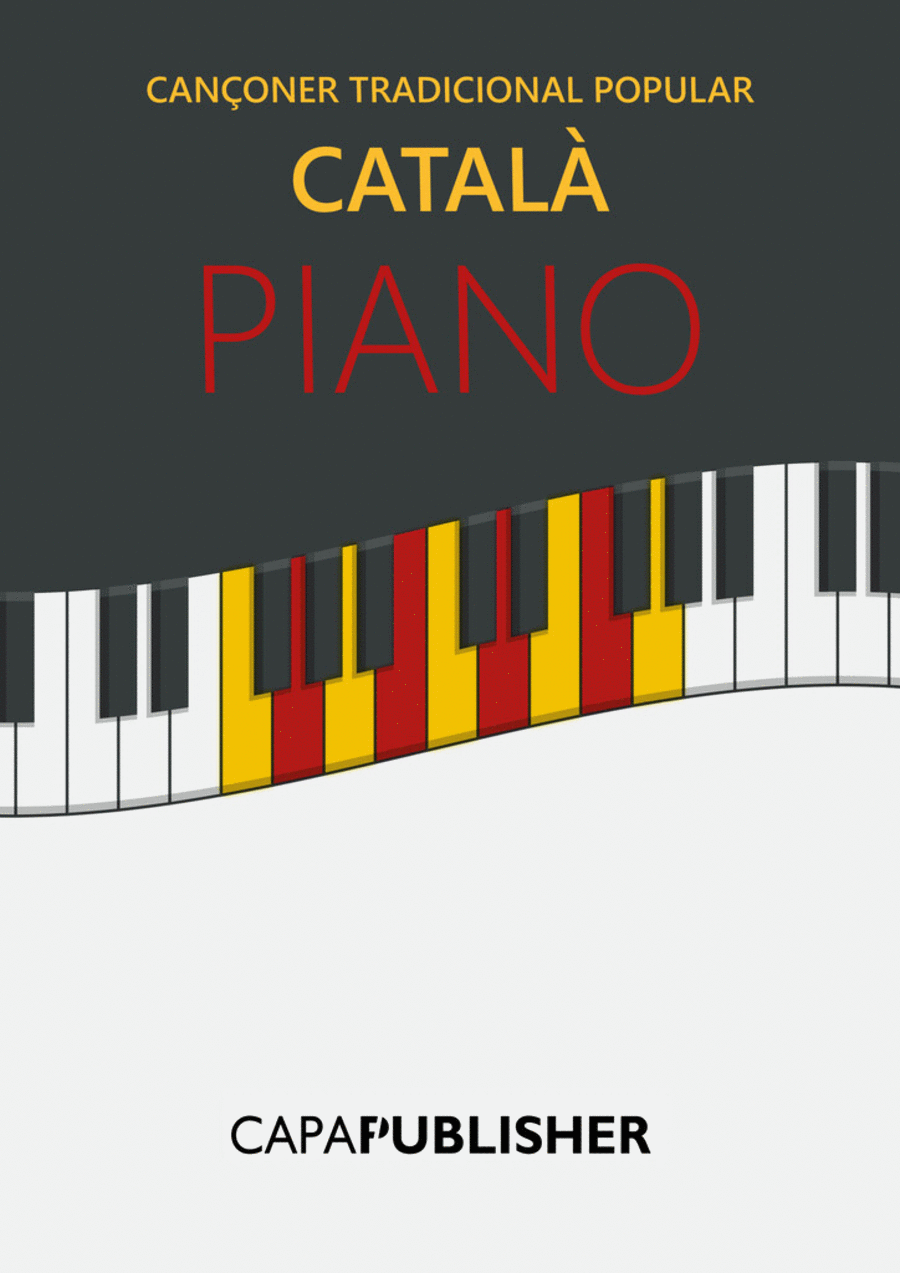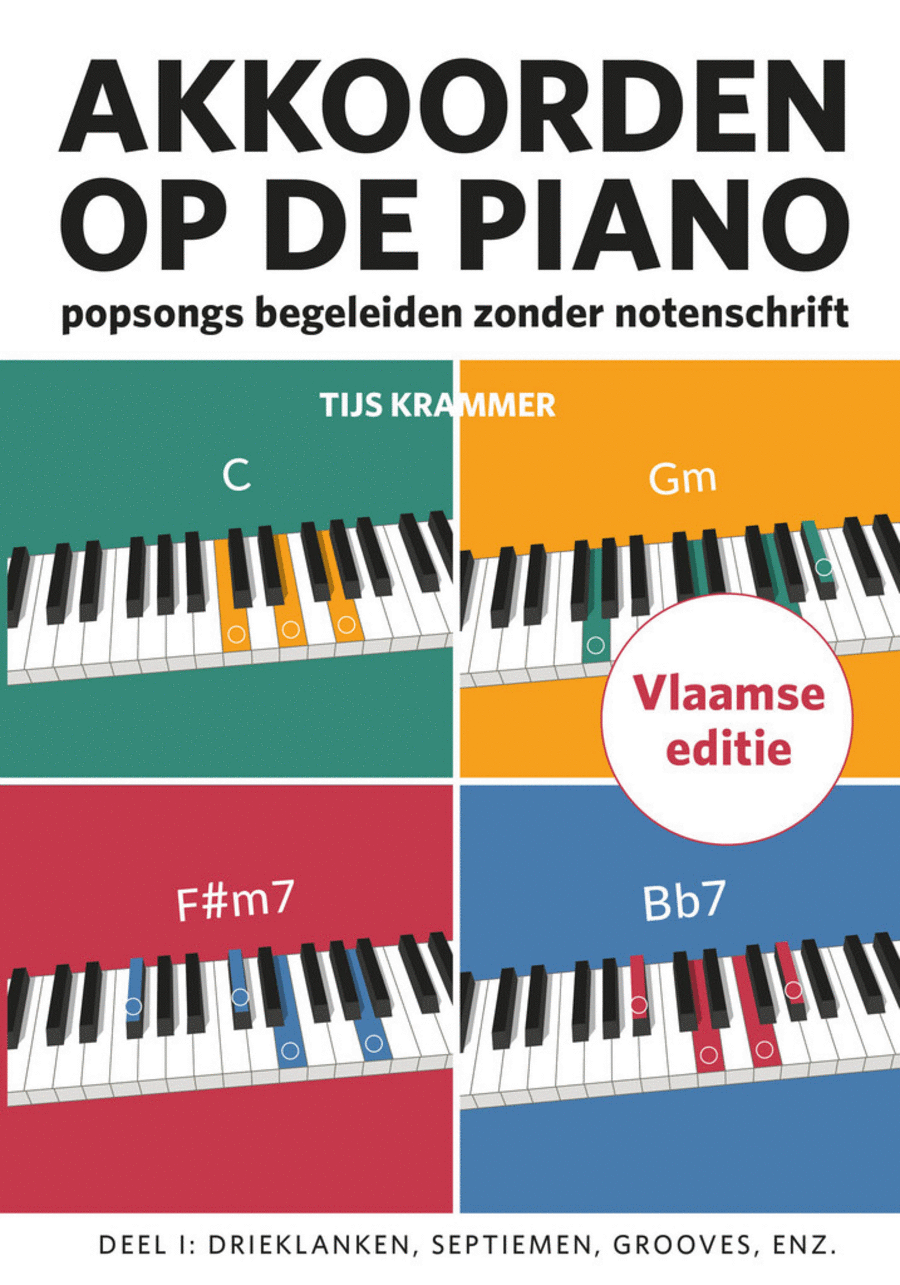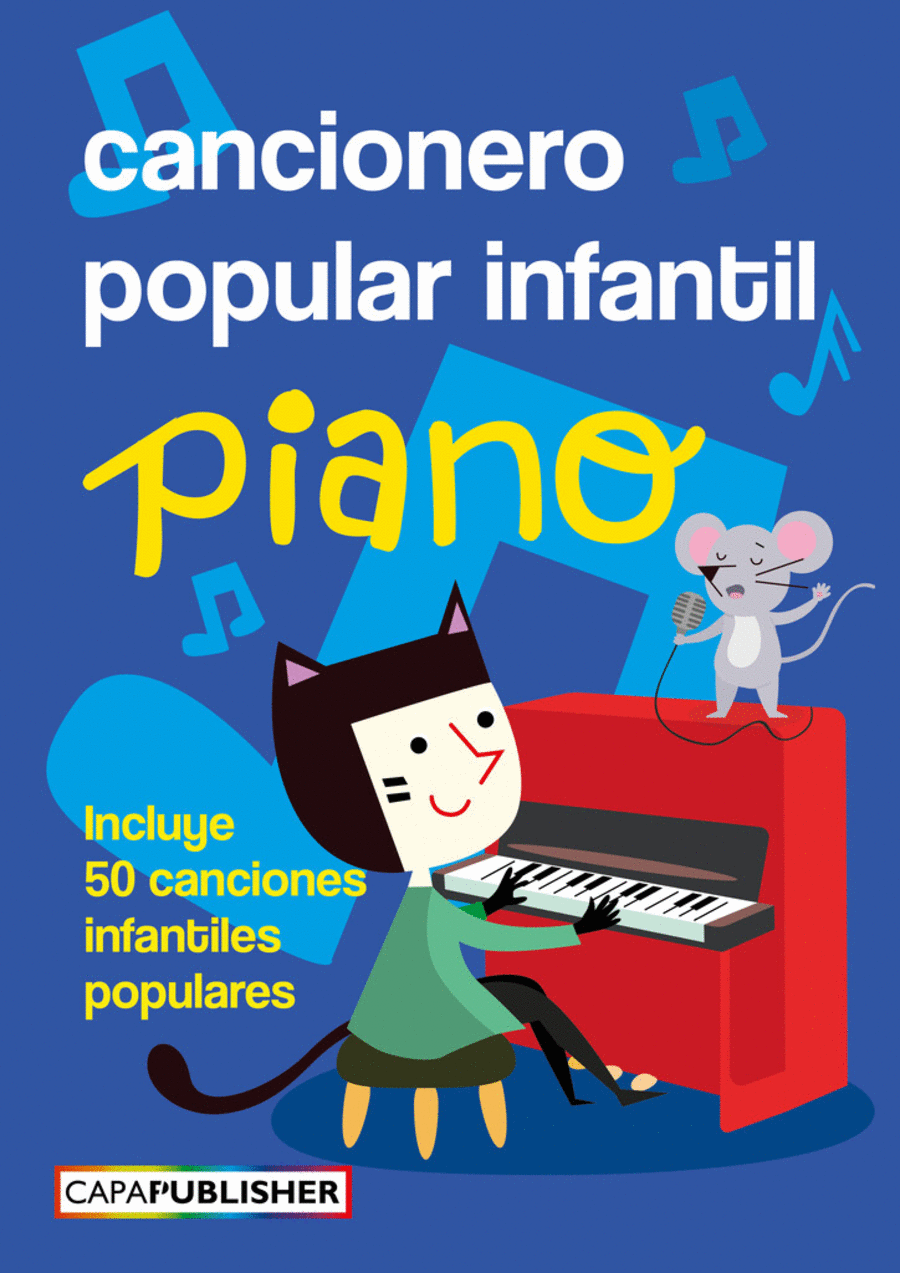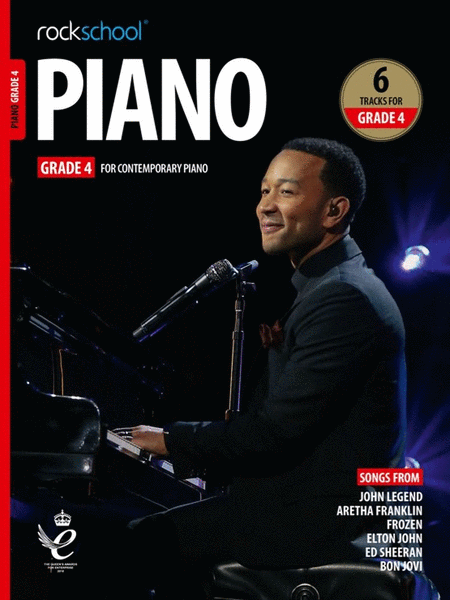|
| Pianthology
Piano seul
University Of York Music Press
Piano SKU: BT.MUSM570360413 By Nicky Losseff. Classical. Book Only. Unive...(+)
Piano SKU:
BT.MUSM570360413 By
Nicky Losseff. Classical.
Book Only. University of
York Music Press
#MUSM570360413. Published
by University of York
Music Press
(BT.MUSM570360413).
English. Piantho
logy is a new collection
of seven contemporary
Piano works by living
composers which includes
a recording of each of
the works performed by
Nicky Losseff, the
volume's editor. Nicky
Losseff, who combines a
Senior Lectureship at the
University of York with
an active career as a
concert pianist, has
written extensive
performance and analysis
notes on all of the
works, giving helpful
suggestions about the
study and performance os
each piece in turn. The
anthology is aimed at
university and
conservatiore level Piano
students, but will serve
as an excellent
introduction to new music
for the Piano for any
dedicated player looking
to broaden their range.
The worksincluded in
Pianthology are: Anthony
Gilbert - Three Papillon
Postcards Sadie Harrison
- Impresa Amorosa Ed
Hughes - Third Orchid Jo
Kondo - A Dance For
Piano, 'Europeans' David
Lumsdaine - Six Postcard
Pieces Hilda Paredes -
Caligrama Thomas Simaku -
Des Pas Chromatiques
Pianthology was launched
at the York University
Spring New Music Festival
on May 8th 2008, when all
seven works were
performed, some by Nicky
Losseff and some by her
students from the
University of York.
Includes Nicky Losseff's
recordings of all works.
Three Papillon Postcards
Impresa Amorosa 1. $21.95 - Voir plus => AcheterDélais: 4 to 6 weeks | | | |
| A Dance for Piano, Europeans
Piano seul
University Of York Music Press
Piano SKU: BT.MUSM570204298 Composed by Jo Kondo. Classical. Book Only. 6...(+)
Piano SKU:
BT.MUSM570204298
Composed by Jo Kondo.
Classical. Book Only. 6
pages. University of York
Music Press
#MUSM570204298. Published
by University of York
Music Press
(BT.MUSM570204298).
English. Publish
ed 1990. Commissioned by
Satoko Inoue. First
performance: Tokyo, 1991,
Satoko Inoue. $12.95 - Voir plus => AcheterDélais: 4 to 6 weeks | | | |
| Piano ABC 1
Piano seul - Débutant
EMB (Editio Musica Budapest)
Piano - Grade 1 SKU: BT.EMBZ14019 Piano tutor for beginners. Compo...(+)
Piano - Grade 1 SKU:
BT.EMBZ14019 Piano
tutor for beginners.
Composed by Lajos Papp.
EMB ABC Series. Method.
Book Only. Composed 1995.
36 pages. Editio Musica
Budapest #EMBZ14019.
Published by Editio
Musica Budapest
(BT.EMBZ14019).
English-German-Hungari
an. In the Piano
ABC the musical contents
and teaching experiences
of Eastern and Western
Europe are combined. Thus
this piano tutor can
mediate musically between
Eastern and Western
Europe. The Piano ABC is
suitable for individual
learning and group
instruction alike.
In the Piano
ABC the musical
contents and teaching
experiences of Eastern
and Western Europe are
combined. Thus this piano
tutor can mediate
musically between Eastern
and Western Europe. The
Piano ABC is
suitable forindividual
learning and group
instruction
alike.
In
Klavier - ABC sind
musikalische Inhalte und
Lehrmethoden aus Ost- und
Westeuropa vereint.
KLavierlehrer können
mit diesem Buch also den
Anfängern unter ihren
Schülern beide
musikalischen Welten
vermitteln. Klavier -
ABC kann sowohl im
Einzel- als auch im
Gruppenunterricht
eingesetzt werden. $21.95 - Voir plus => AcheterDélais: 2 to 3 weeks | | | |
| Sarabande
Piano seul - Avancé
De Haske Publications
Piano - advanced SKU: BT.DHP-1165709-401 Piano Reduction. By Paul ...(+)
Piano - advanced SKU:
BT.DHP-1165709-401
Piano Reduction.
By Paul Mann. By Jon
Lord. Piano Reduction.
Composed 2016. 80 pages.
De Haske Publications
#DHP 1165709-401.
Published by De Haske
Publications
(BT.DHP-1165709-401).
ISBN
9789043150231. Jon
Lord’s
Sarabande was
composed during 1975 and
released as a solo album
the following year. This
new revised edition of
the composer’s
2010 concert version
represents the first
appearance of the work in
print in anyform. Lord
intended it for his own
use in live performance,
as a companion to his
celebrated Concerto
for Group and
Orchestra. It is a
brilliant showpiece for
the combined forces of
rock band and orchestra,
takinginspiration from
the keyboard suites of
J.S. Bach. This new full
score is edited by Jon
Lord’s long-time
musical collaborator, the
conductor Paul Mann, and
makes use of many
previously unavailable
sources including
themanuscriptscores of
the original version and
a copy of the score
corrected in consultation
with the composer
following the 2010
premiere. It can
therefore be said to
represent as closely as
possible Jon
Lord’s final
thoughts onthe work.
Jon Lords
Sarabande werd
gecomponeerd in 1975 en
het jaar daarop
uitgebracht als
soloalbum. Deze nieuwe,
herziene uitgave van de
concertversie die de
componist zelf in 2010
vervaardigde, is de
eerste editie op papier
dieooit van het werk is
verschenen. Lord
gebruikte de basisversie
zelf bij live optredens,
wanneer hij het werk
uitvoerde naast zijn
gevierde Concerto for
Group and Orchestra.
Het is een geweldig stuk
voor een combinatie
vanrockband en orkest, ge
nspireerd op de
klavecimbelsuites van
Johann Sebastian Bach.
Deze nieuwe partituur is
bewerkt door dirigent
Paul Mann, met wie de
componist op muzikaal
gebied al jaren
samenwerkt. Er zijn
veelvoorheenontoegankelij
ke bronnen voor gebruikt,
waaronder de
handgeschreven partituren
van de originele versie
en een partituur die na
de première in 2010 is
verbeterd in overleg met
de componist. Daarom kan
worden gesteld datdeze
bewerking de laatste
gedachten van Jon Lord
over dit werk zo
nauwkeurig mogelijk
weergeeft.
Partitur und
Klavierauszug der
Sarabande können
käuflich erworben
werden.
Das
Einzelstimmen-Set ist
ausschließlich
Leihmaterial.
Auskunft
über Leih-Bedingungen
und Preise erhalten Sie
auf Nachfrage. Bitte
kontaktierenSie:
HalLeonard Europe BV -
Rental
department
E-Mail: rental@hall
eonardeurope.nl
Jon Lords
Sarabande entstand
1975 und wurde im
darauffolgenden Jahr
alsSoloalbum
veröffentlicht. Die
überarbeitete Ausgabe
der Konzertversion des
Komponisten aus dem Jahr
2010 erscheint hiermit
zum ersten Mal in
gedruckter Form. Lord
hattediese Version für
seine eigenen
Live-Auftritte gedacht,
alseine Art Ergänzung
zu seinem berühmten
Concerto for Group and
Orchestra. Das Werk
ist ein brillantes
Paradebeispiel für die
vereinte Kraft von
Rockband und Orchester
und wurde von denSuiten
J. S. Bachs inspiriert.
Dieseneue Ausgabe der
Partitur wurde von Paul
Mann, Jon Lords
langjährigem
musikalischem Freund,
herausgegeben. Sie
basiert auf zahlreichen
bisher nicht
zugänglichen Quellen
wie dem Manuskript der
Originalversion undeiner
Kopie der inAbsprache mit
dem Komponisten
korrigierten Partitur
nach der Aufführung im
Jahr 2010. Es werden
somit Jon Lords letzte
Gedanken zu diesem Werk
so genau wie möglich
dargestellt.
Sarabande
de Jon Lord fut
composé en 1975 et
sorti comme disque solo
l’année
d’après. Cette
nouvelle édition
révisée, basée
sur la version de concert
du compositeur de 2010,
est la toute première
version publiée de
l’œuvre.Lord
l’avait conçue
pour accompagner son
Concerto for Group and
Orchestra lors
d’interprétatio
ns en direct. Un morceau
virtuose qui combine les
forces de groupe de rock
et d’orchestre,
inspiré par les suites
pour clavier
deJean-Sébastien Bach.
Cette nouvelle édition
complète est
éditée par le chef
d’orchestre Paul
Mann, collaborateur
musical de Jon Lord
depuis longtemps. Elle se
repose sur de nombreuses
sources qui étaient
indisponiblesauparavant,c
omme le manuscrit de la
version originale, ainsi
qu’une copie de la
partition corrigée en
consultation avec le
compositeur après la
première de 2010. Par
conséquent, cette
édition est sans doute
une
représentationaussi
précise que possible
des dernières
réflexions de Jon Lord
sur cette Å“uvre. $38.95 - Voir plus => AcheterDélais: 2 to 3 weeks | | | |
| Transcriptions of Lieder
Piano seul
Carl Fischer
Chamber Music Piano SKU: CF.PL1056 Composed by Clara Wieck-Schumann, Fran...(+)
Chamber Music Piano
SKU: CF.PL1056
Composed by Clara
Wieck-Schumann, Franz
Schubert, and Robert
Schumann. Edited by
Nicholas Hopkins.
Collection. With Standard
notation. 128 pages. Carl
Fischer Music #PL1056.
Published by Carl Fischer
Music (CF.PL1056).
ISBN 9781491153390.
UPC: 680160910892.
Transcribed by Franz
Liszt. Introduction
It is true that Schubert
himself is somewhat to
blame for the very
unsatisfactory manner in
which his admirable piano
pieces are treated. He
was too immoderately
productive, wrote
incessantly, mixing
insignificant with
important things, grand
things with mediocre
work, paid no heed to
criticism, and always
soared on his wings. Like
a bird in the air, he
lived in music and sang
in angelic fashion.
--Franz Liszt, letter to
Dr. S. Lebert (1868) Of
those compositions that
greatly interest me,
there are only Chopin's
and yours. --Franz Liszt,
letter to Robert Schumann
(1838) She [Clara
Schumann] was astounded
at hearing me. Her
compositions are really
very remarkable,
especially for a woman.
There is a hundred times
more creativity and real
feeling in them than in
all the past and present
fantasias by Thalberg.
--Franz Liszt, letter to
Marie d'Agoult (1838)
Chretien Urhan
(1790-1845) was a
Belgian-born violinist,
organist and composer who
flourished in the musical
life of Paris in the
early nineteenth century.
According to various
accounts, he was deeply
religious, harshly
ascetic and wildly
eccentric, though revered
by many important and
influential members of
the Parisian musical
community. Regrettably,
history has forgotten
Urhan's many musical
achievements, the most
important of which was
arguably his pioneering
work in promoting the
music of Franz Schubert.
He devoted much of his
energies to championing
Schubert's music, which
at the time was unknown
outside of Vienna.
Undoubtedly, Urhan was
responsible for
stimulating this
enthusiasm in Franz
Liszt; Liszt regularly
heard Urhan's organ
playing in the
St.-Vincent-de-Paul
church in Paris, and the
two became personal
acquaintances. At
eighteen years of age,
Liszt was on the verge of
establishing himself as
the foremost pianist in
Europe, and this
awakening to Schubert's
music would prove to be a
profound experience.
Liszt's first travels
outside of his native
provincial Hungary were
to Vienna in 1821-1823,
where his father enrolled
him in studies with Carl
Czerny (piano) and
Antonio Salieri (music
theory). Both men had
important involvements
with Schubert; Czerny
(like Urhan) as performer
and advocate of
Schubert's music and
Salieri as his theory and
composition teacher from
1813-1817. Curiously,
Liszt and Schubert never
met personally, despite
their geographical
proximity in Vienna
during these years.
Inevitably, legends later
arose that the two had
been personal
acquaintances, although
Liszt would dismiss these
as fallacious: I never
knew Schubert personally,
he was once quoted as
saying. Liszt's initial
exposure to Schubert's
music was the Lieder,
what Urhan prized most of
all. He accompanied the
tenor Benedict
Randhartinger in numerous
performances of
Schubert's Lieder and
then, perhaps realizing
that he could benefit the
composer more on his own
terms, transcribed a
number of the Lieder for
piano solo. Many of these
transcriptions he would
perform himself on
concert tour during the
so-called Glanzzeit, or
time of splendor from
1839-1847. This publicity
did much to promote
reception of Schubert's
music throughout Europe.
Once Liszt retired from
the concert stage and
settled in Weimar as a
conductor in the 1840s,
he continued to perform
Schubert's orchestral
music, his Symphony No. 9
being a particular
favorite, and is credited
with giving the world
premiere performance of
Schubert's opera Alfonso
und Estrella in 1854. At
this time, he
contemplated writing a
biography of the
composer, which
regrettably remained
uncompleted. Liszt's
devotion to Schubert
would never waver.
Liszt's relationship with
Robert and Clara Schumann
was far different and far
more complicated; by
contrast, they were all
personal acquaintances.
What began as a
relationship of mutual
respect and admiration
soon deteriorated into
one of jealousy and
hostility, particularly
on the Schumann's part.
Liszt's initial contact
with Robert's music
happened long before they
had met personally, when
Liszt published an
analysis of Schumann's
piano music for the
Gazette musicale in 1837,
a gesture that earned
Robert's deep
appreciation. In the
following year Clara met
Liszt during a concert
tour in Vienna and
presented him with more
of Schumann's piano
music. Clara and her
father Friedrich Wieck,
who accompanied Clara on
her concert tours, were
quite taken by Liszt: We
have heard Liszt. He can
be compared to no other
player...he arouses
fright and astonishment.
His appearance at the
piano is indescribable.
He is an original...he is
absorbed by the piano.
Liszt, too, was impressed
with Clara--at first the
energy, intelligence and
accuracy of her piano
playing and later her
compositions--to the
extent that he dedicated
to her the 1838 version
of his Etudes d'execution
transcendante d'apres
Paganini. Liszt had a
closer personal
relationship with Clara
than with Robert until
the two men finally met
in 1840. Schumann was
astounded by Liszt's
piano playing. He wrote
to Clara that Liszt had
played like a god and had
inspired indescribable
furor of applause. His
review of Liszt even
included a heroic
personification with
Napoleon. In Leipzig,
Schumann was deeply
impressed with Liszt's
interpretations of his
Noveletten, Op. 21 and
Fantasy in C Major, Op.
17 (dedicated to Liszt),
enthusiastically
observing that, I feel as
if I had known you twenty
years. Yet a variety of
events followed that
diminished Liszt's glory
in the eyes of the
Schumanns. They became
critical of the cult-like
atmosphere that arose
around his recitals, or
Lisztomania as it came to
be called; conceivably,
this could be attributed
to professional jealousy.
Clara, in particular,
came to loathe Liszt,
noting in a letter to
Joseph Joachim, I despise
Liszt from the depths of
my soul. She recorded a
stunning diary entry a
day after Liszt's death,
in which she noted, He
was an eminent keyboard
virtuoso, but a dangerous
example for the
young...As a composer he
was terrible. By
contrast, Liszt did not
share in these negative
sentiments; no evidence
suggests that he had any
ill-regard for the
Schumanns. In Weimar, he
did much to promote
Schumann's music,
conducting performances
of his Scenes from Faust
and Manfred, during a
time in which few
orchestras expressed
interest, and premiered
his opera Genoveva. He
later arranged a benefit
concert for Clara
following Robert's death,
featuring Clara as
soloist in Robert's Piano
Concerto, an event that
must have been
exhilarating to witness.
Regardless, her opinion
of him would never
change, despite his
repeated gestures of
courtesy and respect.
Liszt's relationship with
Schubert was a spiritual
one, with music being the
one and only link between
the two men. That with
the Schumanns was
personal, with music
influenced by a hero
worship that would
aggravate the
relationship over time.
Nonetheless, Liszt would
remain devoted to and
enthusiastic for the
music and achievements of
these composers. He would
be a vital force in
disseminating their music
to a wider audience, as
he would be with many
other composers
throughout his career.
His primary means for
accomplishing this was
the piano transcription.
Liszt and the
Transcription
Transcription versus
Paraphrase Transcription
and paraphrase were
popular terms in
nineteenth-century music,
although certainly not
unique to this period.
Musicians understood that
there were clear
distinctions between
these two terms, but as
is often the case these
distinctions could be
blurred. Transcription,
literally writing over,
entails reworking or
adapting a piece of music
for a performance medium
different from that of
its original; arrangement
is a possible synonym.
Adapting is a key part of
this process, for the
success of a
transcription relies on
the transcriber's ability
to adapt the piece to the
different medium. As a
result, the pre-existing
material is generally
kept intact, recognizable
and intelligible; it is
strict, literal,
objective. Contextual
meaning is maintained in
the process, as are
elements of style and
form. Paraphrase, by
contrast, implies
restating something in a
different manner, as in a
rewording of a document
for reasons of clarity.
In nineteenth-century
music, paraphrasing
indicated elaborating a
piece for purposes of
expressive virtuosity,
often as a vehicle for
showmanship. Variation is
an important element, for
the source material may
be varied as much as the
paraphraser's imagination
will allow; its purpose
is metamorphosis.
Transcription is adapting
and arranging;
paraphrasing is
transforming and
reworking. Transcription
preserves the style of
the original; paraphrase
absorbs the original into
a different style.
Transcription highlights
the original composer;
paraphrase highlights the
paraphraser.
Approximately half of
Liszt's compositional
output falls under the
category of transcription
and paraphrase; it is
noteworthy that he never
used the term
arrangement. Much of his
early compositional
activities were
transcriptions and
paraphrases of works of
other composers, such as
the symphonies of
Beethoven and Berlioz,
vocal music by Schubert,
and operas by Donizetti
and Bellini. It is
conceivable that he
focused so intently on
work of this nature early
in his career as a means
to perfect his
compositional technique,
although transcription
and paraphrase continued
well after the technique
had been mastered; this
might explain why he
drastically revised and
rewrote many of his
original compositions
from the 1830s (such as
the Transcendental Etudes
and Paganini Etudes) in
the 1850s. Charles Rosen,
a sympathetic interpreter
of Liszt's piano works,
observes, The new
revisions of the
Transcendental Etudes are
not revisions but concert
paraphrases of the old,
and their art lies in the
technique of
transformation. The
Paganini etudes are piano
transcriptions of violin
etudes, and the
Transcendental Etudes are
piano transcriptions of
piano etudes. The
principles are the same.
He concludes by noting,
Paraphrase has shaded off
into
composition...Composition
and paraphrase were not
identical for him, but
they were so closely
interwoven that
separation is impossible.
The significance of
transcription and
paraphrase for Liszt the
composer cannot be
overstated, and the
mutual influence of each
needs to be better
understood. Undoubtedly,
Liszt the composer as we
know him today would be
far different had he not
devoted so much of his
career to transcribing
and paraphrasing the
music of others. He was
perhaps one of the first
composers to contend that
transcription and
paraphrase could be
genuine art forms on
equal par with original
pieces; he even claimed
to be the first to use
these two terms to
describe these classes of
arrangements. Despite the
success that Liszt
achieved with this type
of work, others viewed it
with circumspection and
criticism. Robert
Schumann, although deeply
impressed with Liszt's
keyboard virtuosity, was
harsh in his criticisms
of the transcriptions.
Schumann interpreted them
as indicators that
Liszt's virtuosity had
hindered his
compositional development
and suggested that Liszt
transcribed the music of
others to compensate for
his own compositional
deficiencies.
Nonetheless, Liszt's
piano transcriptions,
what he sometimes called
partitions de piano (or
piano scores), were
instrumental in promoting
composers whose music was
unknown at the time or
inaccessible in areas
outside of major European
capitals, areas that
Liszt willingly toured
during his Glanzzeit. To
this end, the
transcriptions had to be
literal arrangements for
the piano; a Beethoven
symphony could not be
introduced to an
unknowing audience if its
music had been subjected
to imaginative
elaborations and
variations. The same
would be true of the 1833
transcription of
Berlioz's Symphonie
fantastique (composed
only three years
earlier), the
astonishingly novel
content of which would
necessitate a literal and
intelligible rendering.
Opera, usually more
popular and accessible
for the general public,
was a different matter,
and in this realm Liszt
could paraphrase the
original and manipulate
it as his imagination
would allow without
jeopardizing its
reception; hence, the
paraphrases on the operas
of Bellini, Donizetti,
Mozart, Meyerbeer and
Verdi. Reminiscence was
another term coined by
Liszt for the opera
paraphrases, as if the
composer were reminiscing
at the keyboard following
a memorable evening at
the opera. Illustration
(reserved on two
occasions for Meyerbeer)
and fantasy were
additional terms. The
operas of Wagner were
exceptions. His music was
less suited to paraphrase
due to its general lack
of familiarity at the
time. Transcription of
Wagner's music was thus
obligatory, as it was of
Beethoven's and Berlioz's
music; perhaps the
composer himself insisted
on this approach. Liszt's
Lieder Transcriptions
Liszt's initial
encounters with
Schubert's music, as
mentioned previously,
were with the Lieder. His
first transcription of a
Schubert Lied was Die
Rose in 1833, followed by
Lob der Tranen in 1837.
Thirty-nine additional
transcriptions appeared
at a rapid pace over the
following three years,
and in 1846, the Schubert
Lieder transcriptions
would conclude, by which
point he had completed
fifty-eight, the most of
any composer. Critical
response to these
transcriptions was highly
favorable--aside from the
view held by
Schumann--particularly
when Liszt himself played
these pieces in concert.
Some were published
immediately by Anton
Diabelli, famous for the
theme that inspired
Beethoven's variations.
Others were published by
the Viennese publisher
Tobias Haslinger (one of
Beethoven's and
Schubert's publishers in
the 1820s), who sold his
reserves so quickly that
he would repeatedly plead
for more. However,
Liszt's enthusiasm for
work of this nature soon
became exhausted, as he
noted in a letter of 1839
to the publisher
Breitkopf und Hartel:
That good Haslinger
overwhelms me with
Schubert. I have just
sent him twenty-four new
songs (Schwanengesang and
Winterreise), and for the
moment I am rather tired
of this work. Haslinger
was justified in his
demands, for the Schubert
transcriptions were
received with great
enthusiasm. One Gottfried
Wilhelm Fink, then editor
of the Allgemeine
musikalische Zeitung,
observed of these
transcriptions: Nothing
in recent memory has
caused such sensation and
enjoyment in both
pianists and audiences as
these arrangements...The
demand for them has in no
way been satisfied; and
it will not be until
these arrangements are
seen on pianos
everywhere. They have
indeed made quite a
splash. Eduard Hanslick,
never a sympathetic
critic of Liszt's music,
acknowledged thirty years
after the fact that,
Liszt's transcriptions of
Schubert Lieder were
epoch-making. There was
hardly a concert in which
Liszt did not have to
play one or two of
them--even when they were
not listed on the
program. These
transcriptions quickly
became some of his most
sough-after pieces,
despite their extreme
technical demands.
Leading pianists of the
day, such as Clara Wieck
and Sigismond Thalberg,
incorporated them into
their concert programs
immediately upon
publication. Moreover,
the transcriptions would
serve as inspirations for
other composers, such as
Stephen Heller, Cesar
Franck and later Leopold
Godowsky, all of whom
produced their own
transcriptions of
Schubert's Lieder. Liszt
would transcribe the
Lieder of other composers
as well, including those
by Mendelssohn, Chopin,
Anton Rubinstein and even
himself. Robert Schumann,
of course, would not be
ignored. The first
transcription of a
Schumann Lied was the
celebrated Widmung from
Myrten in 1848, the only
Schumann transcription
that Liszt completed
during the composer's
lifetime. (Regrettably,
there is no evidence of
Schumann's regard of this
transcription, or even if
he was aware of it.) From
the years 1848-1881,
Liszt transcribed twelve
of Robert Schumann's
Lieder (including one
orchestral Lied) and
three of Clara (one from
each of her three
published Lieder cycles);
he would transcribe no
other works of these two
composers. The Schumann
Lieder transcriptions,
contrary to those of
Schubert, are literal
arrangements, posing, in
general, far fewer
demands on the pianist's
technique. They are
comparatively less
imaginative in their
treatment of the original
material. Additionally,
they seem to have been
less valued in their day
than the Schubert
transcriptions, and it is
noteworthy that none of
the Schumann
transcriptions bear
dedications, as most of
the Schubert
transcriptions do. The
greatest challenge posed
by Lieder transcriptions,
regardless of the
composer or the nature of
the transcription, was to
combine the vocal and
piano parts of the
original such that the
character of each would
be preserved, a challenge
unique to this form of
transcription. Each part
had to be intact and
aurally recognizable, the
vocal line in particular.
Complications could be
manifold in a Lied that
featured dissimilar
parts, such as Schubert's
Auf dem Wasser zu singen,
whose piano accompaniment
depicts the rocking of
the boat on the
shimmering waves while
the vocal line reflects
on the passing of time.
Similar complications
would be encountered in
Gretchen am Spinnrade, in
which the ubiquitous
sixteenth-note pattern in
the piano's right hand
epitomizes the
ever-turning spinning
wheel over which the
soprano voice expresses
feelings of longing and
heartache. The resulting
transcriptions for solo
piano would place
exceptional demands on
the pianist. The
complications would be
far less imposing in
instances in which voice
and piano were less
differentiated, as in
many of Schumann's Lieder
that Liszt transcribed.
The piano parts in these
Lieder are true
accompaniments for the
voice, providing harmonic
foundation and rhythmic
support by doubling the
vocal line throughout.
The transcriptions, thus,
are strict and literal,
with far fewer demands on
both pianist and
transcriber. In all of
Liszt's Lieder
transcriptions,
regardless of the way in
which the two parts are
combined, the melody
(i.e. the vocal line) is
invariably the focal
point; the melody should
sing on the piano, as if
it were the voice. The
piano part, although
integral to contributing
to the character of the
music, is designed to
function as
accompaniment. A singing
melody was a crucial
objective in
nineteenth-century piano
performance, which in
part might explain the
zeal in transcribing and
paraphrasing vocal music
for the piano. Friedrich
Wieck, father and teacher
of Clara Schumann,
stressed this point
repeatedly in his 1853
treatise Clavier und
Gesang (Piano and Song):
When I speak in general
of singing, I refer to
that species of singing
which is a form of
beauty, and which is a
foundation for the most
refined and most perfect
interpretation of music;
and, above all things, I
consider the culture of
beautiful tones the basis
for the finest possible
touch on the piano. In
many respects, the piano
and singing should
explain and supplement
each other. They should
mutually assist in
expressing the sublime
and the noble, in forms
of unclouded beauty. Much
of Liszt's piano music
should be interpreted
with this concept in
mind, the Lieder
transcriptions and opera
paraphrases, in
particular. To this end,
Liszt provided numerous
written instructions to
the performer to
emphasize the vocal line
in performance, with
Italian directives such
as un poco marcato il
canto, accentuato assai
il canto and ben
pronunziato il canto.
Repeated indications of
cantando,singend and
espressivo il canto
stress the significance
of the singing tone. As
an additional means of
achieving this and
providing the performer
with access to the
poetry, Liszt insisted,
at what must have been a
publishing novelty at the
time, on printing the
words of the Lied in the
music itself. Haslinger,
seemingly oblivious to
Liszt's intent, initially
printed the poems of the
early Schubert
transcriptions separately
inside the front covers.
Liszt argued that the
transcriptions must be
reprinted with the words
underlying the notes,
exactly as Schubert had
done, a request that was
honored by printing the
words above the
right-hand staff. Liszt
also incorporated a
visual scheme for
distinguishing voice and
accompaniment, influenced
perhaps by Chopin, by
notating the
accompaniment in cue
size. His transcription
of Robert Schumann's
Fruhlings Ankunft
features the vocal line
in normal size, the piano
accompaniment in reduced
size, an unmistakable
guide in a busy texture
as to which part should
be emphasized: Example 1.
Schumann-Liszt Fruhlings
Ankunft, mm. 1-2. The
same practice may be
found in the
transcription of
Schumann's An die Turen
will ich schleichen. In
this piece, the performer
must read three staves,
in which the baritone
line in the central staff
is to be shared between
the two hands based on
the stem direction of the
notes: Example 2.
Schumann-Liszt An die
Turen will ich
schleichen, mm. 1-5. This
notational practice is
extremely beneficial in
this instance, given the
challenge of reading
three staves and the
manner in which the vocal
line is performed by the
two hands. Curiously,
Liszt did not use this
practice in other
transcriptions.
Approaches in Lieder
Transcription Liszt
adopted a variety of
approaches in his Lieder
transcriptions, based on
the nature of the source
material, the ways in
which the vocal and piano
parts could be combined
and the ways in which the
vocal part could sing.
One approach, common with
strophic Lieder, in which
the vocal line would be
identical in each verse,
was to vary the register
of the vocal part. The
transcription of Lob der
Tranen, for example,
incorporates three of the
four verses of the
original Lied, with the
register of the vocal
line ascending one octave
with each verse (from low
to high), as if three
different voices were
participating. By the
conclusion, the music
encompasses the entire
range of Liszt's keyboard
to produce a stunning
climactic effect, and the
variety of register of
the vocal line provides a
welcome textural variety
in the absence of the
words. The three verses
of the transcription of
Auf dem Wasser zu singen
follow the same approach,
in which the vocal line
ascends from the tenor,
to the alto and to the
soprano registers with
each verse.
Fruhlingsglaube adopts
the opposite approach, in
which the vocal line
descends from soprano in
verse 1 to tenor in verse
2, with the second part
of verse 2 again resuming
the soprano register;
this is also the case in
Das Wandern from
Mullerlieder. Gretchen am
Spinnrade posed a unique
problem. Since the poem's
narrator is female, and
the poem represents an
expression of her longing
for her lover Faust,
variation of the vocal
line's register, strictly
speaking, would have been
impractical. For this
reason, the vocal line
remains in its original
register throughout,
relentlessly colliding
with the sixteenth-note
pattern of the
accompaniment. One
exception may be found in
the fifth and final verse
in mm. 93-112, at which
point the vocal line is
notated in a higher
register and doubled in
octaves. This sudden
textural change, one that
is readily audible, was a
strategic means to
underscore Gretchen's
mounting anxiety (My
bosom urges itself toward
him. Ah, might I grasp
and hold him! And kiss
him as I would wish, at
his kisses I should
die!). The transcription,
thus, becomes a vehicle
for maximizing the
emotional content of the
poem, an exceptional
undertaking with the
general intent of a
transcription. Registral
variation of the vocal
part also plays a crucial
role in the transcription
of Erlkonig. Goethe's
poem depicts the death of
a child who is
apprehended by a
supernatural Erlking, and
Schubert, recognizing the
dramatic nature of the
poem, carefully depicted
the characters (father,
son and Erlking) through
unique vocal writing and
accompaniment patterns:
the Lied is a dramatic
entity. Liszt, in turn,
followed Schubert's
characterization in this
literal transcription,
yet took it an additional
step by placing the
register of the father's
vocal line in the
baritone range, that of
the son in the soprano
range and that of the
Erlking in the highest
register, options that
would not have been
available in the version
for voice and piano.
Additionally, Liszt
labeled each appearance
of each character in the
score, a means for
guiding the performer in
interpreting the dramatic
qualities of the Lied. As
a result, the drama and
energy of the poem are
enhanced in this
transcription; as with
Gretchen am Spinnrade,
the transcriber has
maximized the content of
the original. Elaboration
may be found in certain
Lieder transcriptions
that expand the
performance to a level of
virtuosity not found in
the original; in such
cases, the transcription
approximates the
paraphrase. Schubert's Du
bist die Ruh, a paradigm
of musical simplicity,
features an uncomplicated
piano accompaniment that
is virtually identical in
each verse. In Liszt's
transcription, the
material is subjected to
a highly virtuosic
treatment that far
exceeds the original,
including a demanding
passage for the left hand
alone in the opening
measures and unique
textural writing in each
verse. The piece is a
transcription in
virtuosity; its art, as
Rosen noted, lies in the
technique of
transformation.
Elaboration may entail an
expansion of the musical
form, as in the extensive
introduction to Die
Forelle and a virtuosic
middle section (mm.
63-85), both of which are
not in the original. Also
unique to this
transcription are two
cadenzas that Liszt
composed in response to
the poetic content. The
first, in m. 93 on the
words und eh ich es
gedacht (and before I
could guess it), features
a twisted chromatic
passage that prolongs and
thereby heightens the
listener's suspense as to
the fate of the trout
(which is ultimately
caught). The second, in
m. 108 on the words
Betrogne an (and my blood
boiled as I saw the
betrayed one), features a
rush of
diminished-seventh
arpeggios in both hands,
epitomizing the poet's
rage at the fisherman for
catching the trout. Less
frequent are instances in
which the length of the
original Lied was
shortened in the
transcription, a tendency
that may be found with
certain strophic Lieder
(e.g., Der Leiermann,
Wasserflut and Das
Wandern). Another
transcription that
demonstrates Liszt's
readiness to modify the
original in the interests
of the poetic content is
Standchen, the seventh
transcription from
Schubert's
Schwanengesang. Adapted
from Act II of
Shakespeare's Cymbeline,
the poem represents the
repeated beckoning of a
man to his lover. Liszt
transformed the Lied into
a miniature drama by
transcribing the vocal
line of the first verse
in the soprano register,
that of the second verse
in the baritone register,
in effect, creating a
dialogue between the two
lovers. In mm. 71-102,
the dialogue becomes a
canon, with one voice
trailing the other like
an echo (as labeled in
the score) at the
distance of a beat. As in
other instances, the
transcription resembles
the paraphrase, and it is
perhaps for this reason
that Liszt provided an
ossia version that is
more in the nature of a
literal transcription.
The ossia version, six
measures shorter than
Schubert's original, is
less demanding
technically than the
original transcription,
thus representing an
ossia of transcription
and an ossia of piano
technique. The Schumann
Lieder transcriptions, in
general, display a less
imaginative treatment of
the source material.
Elaborations are less
frequently encountered,
and virtuosity is more
restricted, as if the
passage of time had
somewhat tamed the
composer's approach to
transcriptions;
alternatively, Liszt was
eager to distance himself
from the fierce
virtuosity of his early
years. In most instances,
these transcriptions are
literal arrangements of
the source material, with
the vocal line in its
original form combined
with the accompaniment,
which often doubles the
vocal line in the
original Lied. Widmung,
the first of the Schumann
transcriptions, is one
exception in the way it
recalls the virtuosity of
the Schubert
transcriptions of the
1830s. Particularly
striking is the closing
section (mm. 58-73), in
which material of the
opening verse (right
hand) is combined with
the triplet quarter notes
(left hand) from the
second section of the
Lied (mm. 32-43), as if
the transcriber were
attempting to reconcile
the different material of
these two sections.
Fruhlingsnacht resembles
a paraphrase by
presenting each of the
two verses in differing
registers (alto for verse
1, mm. 3-19, and soprano
for verse 2, mm. 20-31)
and by concluding with a
virtuosic section that
considerably extends the
length of the original
Lied. The original
tonalities of the Lieder
were generally retained
in the transcriptions,
showing that the tonality
was an important part of
the transcription
process. The infrequent
instances of
transposition were done
for specific reasons. In
1861, Liszt transcribed
two of Schumann's Lieder,
one from Op. 36 (An den
Sonnenschein), another
from Op. 27 (Dem roten
Roslein), and merged
these two pieces in the
collection 2 Lieder; they
share only the common
tonality of A major. His
choice for combining
these two Lieder remains
unknown, but he clearly
recognized that some
tonal variety would be
needed, for which reason
Dem roten Roslein was
transposed to C>= major.
The collection features
An den Sonnenschein in A
major (with a transition
to the new tonality),
followed by Dem roten
Roslein in C>= major
(without a change of key
signature), and
concluding with a reprise
of An den Sonnenschein in
A major. A three-part
form was thus established
with tonal variety
provided by keys in third
relations (A-C>=-A); in
effect, two of Schumann's
Lieder were transcribed
into an archetypal song
without words. In other
instances, Liszt treated
tonality and tonal
organization as important
structural ingredients,
particularly in the
transcriptions of
Schubert's Lieder cycles,
i.e. Schwanengesang,
Winterreise a... $32.99 - Voir plus => AcheterDélais: 1 to 2 weeks | | | |
| Piano Abc Volume 1
Piano seul - Débutant
EMB (Editio Musica Budapest)
Piano - Grade 1 SKU: HL.50485932 Piano Tutor for Beginners - Individua...(+)
Piano - Grade 1 SKU:
HL.50485932 Piano
Tutor for Beginners -
Individuals or Groups
-Using European
Children's and Folk
Songs. Composed by
Lajos Papp. EMB. Volume
1. Method, Tutor.
Softcover. 36 pages.
Editio Musica Budapest
#Z14019. Published by
Editio Musica Budapest
(HL.50485932). ISBN
9780634082214. UPC:
073999221435.
9.0x12.0x0.115 inches.
Hungarian, English,
German. In the
Piano ABC the musical
contents and teaching
experiences of Eastern
and Western Europe are
combined. Thus this piano
tutor can mediate
musically between Eastern
and Western Europe. The
Piano ABC is suitable for
individual learning and
group instruction
alike. $24.95 - Voir plus => Acheter | | | |
| Piano Abc Volume 2
Piano seul - Débutant
EMB (Editio Musica Budapest)
Piano - Grade 1-2 SKU: HL.50485933 Piano Tutor for Beginners Using Eur...(+)
Piano - Grade 1-2 SKU:
HL.50485933 Piano
Tutor for Beginners Using
European Children's and
Folk Songs. Composed
by Lajos Papp. EMB.
Volume 2. Method, Tutor.
Softcover. 76 pages.
Editio Musica Budapest
#Z14064. Published by
Editio Musica Budapest
(HL.50485933). ISBN
9780634082283. UPC:
073999859331.
9.0x12.0x0.222 inches.
Hungarian, English,
German. In the
Piano ABC the musical
contents and teaching
experiences of Eastern
and Western Europe are
combined. Thus this piano
tutor can mediate
musically between Eastern
and Western Europe. The
Piano ABC is suitable for
individual learning and
group instruction
alike. $22.95 - Voir plus => Acheter | | | |
| Poco Piano For Young Children - Book 4
Piano seul - Débutant
Hal Leonard
Piano SKU: BT.ALF009834304854 Book Only. Hal Leonard Europe #ALF009834304...(+)
Piano SKU:
BT.ALF009834304854
Book Only. Hal Leonard
Europe #ALF009834304854.
Published by Hal Leonard
Europe
(BT.ALF009834304854).
ISBN 9789834304850.
English. With
its highly attractive,
full-colour,
age-appropriate layout,
Poco Piano For
Young Children
encourages young children
to take the first steps
on a difficult, but
thoroughly rewarding
journey. Together withthe
Music Theory for
Young Children
books, the Poco
Piano For Young
Children series
leads the child from the
very beginning to grade 1
level. Poco
Piano for Young
Children
includesexercises to help
the child develop
technique, rhythm and
reading, and it involves
the child in activities
such as pasting,
colouring, tracing,
circling and
clapping. B
ook 4 reinforces
and revisesallconcepts
learned in Books 1-3. It
contains attractive
repertoire in various
styles and from different
periods. Each piece has a
comprehensive preparation
section covering the
musical, technical and
structural matters which
willbe encountered. The
aim is to cultivate
critical thinking and
musical awareness in the
student. As in previous
books, the child is
actively involved through
the use of writing,
colouring, tracing and
pasting, thereby making
thepreparation an
enjoyable activity. The
standard of the
repertoire approaches
that of Grade 1. $11.95 - Voir plus => AcheterDélais: 4 to 6 weeks | | | |
| Poco Piano For Young Children - Book 3 (2nd Ed.)
Piano seul - Débutant
Hal Leonard
Piano SKU: BT.ALF009834304846 Tuition. Book Only. Hal Leonard Europe #ALF...(+)
Piano SKU:
BT.ALF009834304846
Tuition. Book Only. Hal
Leonard Europe
#ALF009834304846.
Published by Hal Leonard
Europe
(BT.ALF009834304846).
ISBN 9789834304843.
English. With
its highly attractive,
full-colour,
age-appropriate layout,
Poco Piano For
Young Children
encourages young children
to take the first steps
on a difficult, but
thoroughly rewarding
journey. Together withthe
Music Theory for
Young Children
books, the Poco
Piano For Young
Children series
leads the child from the
very beginning to grade 1
level.
Poco Piano for
Young Children
includesexercises to help
the child develop
technique, rhythm and
reading, and it involves
the child in activities
such as pasting,
colouring, tracing,
circling and
clapping.
Book
3 introduces the
concepts ofkey,key
signature, scales,
triads, tones and
semitones in a novel and
exciting way: each key is
a group of characters or
objects with note-names
(i.e. a band, a birthday
party, a clothes-line
with garments). Certain
notes belong,while all
other notes (accidentals)
are outsiders.
Transposition is a
natural outcome of this
concept, with a tune
moving from one group to
another. The child
masters eight new notes
(up to Treble High G and
down to Bass Low F),which
facilitates the playing
of more adventurous
repertoire. The
semiquaver, semiquaver
rest, dotted crotchet and
dotted quaver are
introduced, and tempo
markings are now in
Italian. As in the
previous two books,
ensemble-playingis
encouraged. $11.95 - Voir plus => AcheterDélais: 4 to 6 weeks | | | |
| Sight Reading Success - Piano Grade 2
Piano seul [Partition + CD] - Facile
Hal Leonard
Ear Training and Sight Reading - Grade 2 SKU: BT.MUSRHG526 Composed by Ma...(+)
Ear Training and Sight
Reading - Grade 2 SKU:
BT.MUSRHG526 Composed
by Malcolm Riley and Paul
Terry. Sight Reading
Success. Exam Material.
Book with Online Audio.
24 pages. Hal Leonard
Europe #MUSRHG526.
Published by Hal Leonard
Europe (BT.MUSRHG526).
ISBN 9781780381190.
English. Each
book in the exciting new
Sight Reading
Success series
contains expert advice
and a series of practice
tests that will help your
students to tackle the
sight reading element of
their Piano exams with
confidence.
Uniq
uely, each book is
accompanied by a CD,
providing guidance
through each test and
demonstrating how it
should sound (with Vocals
by Kate Johnson and Piano
by Harriet Power). The
Sight Reading
Success books
are ideal for independent
use by students of all
ages.
These
books are a brilliant way
for students of Piano to
be guided through the
fundamentals of
sight-reading, a hugely
important skill forall
players of Piano. This
Grade
2 book takes
you through everything
you need to prepare for
this exam, from rhythm
and tempo, dotted and
tied notes, playing with
both hands together and
new keys. Towards the end
of the book, you are
presented with lots of
pieces so that you can
practise the techniques
you've learned on your
own. This practice is
essential for
Sight Reading
Success and you
can listen to each and
every track on the CD
provided to see how it's
meant to
sound.
Written
by experienced examiners
and teachers,
Sight Reading
Success accurat
ely reflects the style of
the revised ABRSM tests.
This also means that you
will get some insider
insight into the best
ways to practise and
prepare for the actual
exam, as well as what to
expect at the time.
| | | |
| Mein Zaubergarten II
Piano seul - Intermédiaire
Hal Leonard
Piano - late intermediate SKU: BT.OKTA001-21 22 kleine Fantasiestüc...(+)
Piano - late intermediate
SKU: BT.OKTA001-21
22 kleine
Fantasiestücke für
Klavier. Composed by
Thomas Doss. Classical.
Book Only. Composed 2021.
92 pages. Hal Leonard
Europe #OKTA001-21.
Published by Hal Leonard
Europe (BT.OKTA001-21).
My Magic Garden
II is the sequel to the
piano book My Magic
Garden I. In this
collection there are 18
different atmospheric
pieces for piano with 2
hands and 4 pieces for
piano with 4 hands.
The 22 works in the
moderate to difficult of
difficulty describe in a
pictorial tonal language
various imaginative
processes in a
flourishing Garden from a
child's point of view.
Nothing stands in the way
of an exciting
journey.
Mein
Zaubergarten II ist die
Fortsetzung des
Klavierbuches Mein
Zaubergarten I. In der
vorliegenden Sammlung
befinden sich 18
unterschiedliche
Stimmungsstücke für
Klavier zu 2 Händen
und 4 Stücke für
Klavier zu 4 Händen.
Die 22 Werke im
mittleren bis schwierigem
Schwierigkeitsgrad
beschreiben in einer
bildhaften Tonsprache
verschiedenste
fantasievolle Vorgänge
in einem blühenden
Garten aus der Sicht
eines Kindes. Einer
spannenden Reise steht
nichts im Wege. $29.95 - Voir plus => AcheterDélais: 2 to 3 weeks | | | |
| Spil Bare Løs 1
Piano seul
Hal Leonard
Electric Organ, Piano, Keyboard SKU: BT.WHTING187 Piano. Composed ...(+)
Electric Organ, Piano,
Keyboard SKU:
BT.WHTING187
Piano. Composed by
Ebbe Nielsen. Spil Bare
Løs - Piano-Keyboard.
Tuition. Book Only. 32
pages. Hal Leonard Europe
#WHTING187. Published by
Hal Leonard Europe
(BT.WHTING187). ISBN
9788787999878.
Danish. Spil Bare
Løs 1 , by Ebbe
Nielsen , is an
introduction to Keyboard,
Electric Organ or Piano
playing. $12.95 - Voir plus => AcheterDélais: 2 to 3 weeks | | | |
| Spil Bare Løs 2
Piano seul
Hal Leonard
Keyboard, Electric Organ and Piano SKU: BT.WHTING189 Piano. Compos...(+)
Keyboard, Electric Organ
and Piano SKU:
BT.WHTING189
Piano. Composed by
Ebbe Nielsen. Spil Bare
Løs - Piano-Keyboard.
Tuition. Book Only. Hal
Leonard Europe
#WHTING189. Published by
Hal Leonard Europe
(BT.WHTING189). ISBN
9788787999892.
Danish. Spil bare
løs 2 , is an
introduction to El-Organ,
Piano or Keyboard playing
by Ebbe Nielsen . $12.95 - Voir plus => AcheterDélais: 2 to 3 weeks | | | |
| Hummel: Leichte Klavierstücke
Piano seul
EMB (Editio Musica Budapest)
Piano SKU: BT.EMBZ14802 Composed by Johann Nepomuk Hummel. EMB Musical Ex...(+)
Piano SKU:
BT.EMBZ14802 Composed
by Johann Nepomuk Hummel.
EMB Musical Expeditions.
Educational Tool. Book
Only. Composed 2012. 48
pages. Editio Musica
Budapest #EMBZ14802.
Published by Editio
Musica Budapest
(BT.EMBZ14802).
Johann Nepomuk
Hummel is a key figure of
the transition period
between Viennese
classicism and
Romanticism: a pupil of
Mozart, a contemporary of
Beethoven, and a model
for the composers of the
next generation,
especially Chopin. He was
not only a composer but
also one of the greatest
virtuoso pianists of that
time, who gave enormously
successful concerts all
over Europe, and wrote
one of the most important
piano tutors of the first
half of the 19th century
(Ausführlich
theoretisch-practische
Anweisung zum Pianoforte
Spiel). The majority of
the pieces that feature
in this collection are
from that piano
tutor.
Johann
Nepomuk Hummel ist eine
Schlüsselfigur der
Ãœbergangsepoche
zwischen der Wiener
Klassik und der Romantik:
Er war Schüler von
Mozart, Zeitgenosse von
Beethoven und das Vorbild
der nachfolgenden
Generation,vor allem von
Chopin. Er war nicht nur
Komponist, sondern einer
der größten
Klaviervirtuosen seiner
Zeit, dessen Kunst
europaweit gefeiert
wurde. Er schrieb eine
der wichtigsten
Klavierschulen in der
ersten Hälfte des 19.
Jahrhunderts:
Ausführlich
theoretisch-practische
Anweisung zum Pianoforte
Spiel. Der Großteil
der Stücke in dieser
Sammlung stammt aus
dieser
Klavierschule.
Joh
ann Nepomuk Hummel est
une figure clé de la
période de transition
entre classicisme
viennois et romantisme :
il fut l'élève de
Mozart, le contemporain
de Beethoven, et un
modèle pour les
compositeurs de la
génération
suivante, notamment
Chopin. Il était non
seulement compositeur,
mais aussi l'un des plus
grands pianistes
virtuoses de l'époque,
ayant donné des
concerts succès dans
toute l'Europe.
Éminent professeur de
piano, sa méthode
Anweisung zum
Pianofortespiel remporta
un vif succès tout au
long de la première
moitié du 19e
siècle. $14.95 - Voir plus => AcheterDélais: 2 to 3 weeks | | | |
| The European Anthem
Piano seul
Schott
Piano; Piano/Keyboard SKU: HL.49005517 Music from the Last Movement of...(+)
Piano; Piano/Keyboard
SKU: HL.49005517
Music from the Last
Movement of the Ninth
Symphony - Piano
Solo. Composed by
Ludwig van Beethoven.
Arranged by Herbert von
Karajan. This edition:
Folding. Sheet music.
Edition Schott. Exklusiv
bei Schott: Die
offizielle Hymne der
neuen, grosseren
Europaischen Union!
Classical. 4 pages.
Schott Music #ED 5203.
Published by Schott Music
(HL.49005517). ISBN
9790001059350. UPC:
073999193732.
9.0x12.0x0.009
inches. In 1972 the
Council of Europe adopted
Beethoven's 'Ode to Joy'
as its anthem. The
well-known conductor
Herbert von Karajan was
commissioned to arrange
three instrumental
versions - for solo
piano, wind orchestra and
symphony orchestra.
Without words, in the
universal language of
music, the anthem is an
expression of the
idealistic values of
freedom, peace and
solidarity which Europe
stands for. In 1985 the
heads of state and
government adopted the
hymn as the EU's official
anthem. It does not
replace the national
anthems of the member
states, but rather
celebrates common values
as well as unity in
diversity. $9.99 - Voir plus => Acheter | | | |
| Piano Course Book 1
Piano seul [Partition + Accès audio] - Débutant
Hal Leonard
With mp3 files. Composed by Leila Fletcher. Method. Book with Audio-Online. ...(+)
With mp3 files. Composed
by
Leila Fletcher. Method.
Book
with Audio-Online. Hal
Leonard Europe #LF001.
Published by Hal Leonard
Europe
$19.95 - Voir plus => AcheterDélais: 24 hours - In Stock | | | |
| Upbeat For Piano
Piano seul
Hal Leonard
Piano SKU: BT.SUBJECT1898771049 Level 1. Composed by Alison Bowdit...(+)
Piano SKU:
BT.SUBJECT1898771049
Level 1. Composed
by Alison Bowditch. Book
Only. 16 pages. Hal
Leonard Europe
#SUBJECT1898771049.
Published by Hal Leonard
Europe
(BT.SUBJECT1898771049).
ISBN
9781898771043. <
em>Upbeat! for Piano
by Alison Bowditch is a
set of twelve original
compositions that you
will find exciting,
inspiring and
entertaining whatever
your age. This is the
first in a series of five
levels designed to
captureyour imagination
and increase your
enjoyment. Though the
levels become
increasingly harder, this
is a progressive
challenge as each piece
is an adventure with its
own mood and rhythms. As
you progress you will
meet a wideningrange of
key signatures and rhythm
patterns including Jazz,
Swing, Rock, Boogie and
Blues making this
delightful collection
great fun to hear and
play. $4.95 - Voir plus => AcheterDélais: 4 to 6 weeks | | | |
| Upbeat For Piano
Piano seul
Hal Leonard
Piano SKU: BT.SUBJECT189877109X Level 0. Composed by Alison Bowdit...(+)
Piano SKU:
BT.SUBJECT189877109X
Level 0. Composed
by Alison Bowditch. Book
Only. 16 pages. Hal
Leonard Europe
#SUBJECT189877109X.
Published by Hal Leonard
Europe
(BT.SUBJECT189877109X).
ISBN
9781898771098. <
em>Upbeat! for Piano
by Alison Bowditch is a
set of eleven original
compositions that you
will find exciting,
inspiring and
entertaining whatever
your age. This is the the
easiest level in a series
of six books designedto
capture your imagination
and increase your
enjoyment.
Though the
levels become
increasingly harder, this
is a progressive
challenge as each piece
is an adventure with its
own mood and rhythms. As
you progress youwill meet
a widening range of key
signatures and rhythm
patterns including Jazz,
Swing, Rock, Boogie and
Blues making this
delightful collection
great fun to hear and
play. $4.95 - Voir plus => AcheterDélais: 4 to 6 weeks | | | |
| 864 Accords piano
Piano seul - Facile
Hal Leonard
Piano - easy SKU: BT.DARSB2279 Composed by Philippe Ganter. Studies and E...(+)
Piano - easy SKU:
BT.DARSB2279 Composed
by Philippe Ganter.
Studies and Exercises.
Book Only. 64 pages. Hal
Leonard Europe
#DARSB2279. Published by
Hal Leonard Europe
(BT.DARSB2279). ISBN
9782917280140.
French. 864 accords
piano, diagrammes
présentés sur 4
pages par fondamentale
(18 accords par page).
Avec une section
théorique de 12 pages
: présentation de la
construction des accords
et de leur notation. $13.95 - Voir plus => AcheterDélais: 4 to 6 weeks | | | |
| Spil Bare Løs 4
Piano seul
Hal Leonard
Keyboard, Piano, Electric Organ SKU: BT.WHTING193 Piano. Composed ...(+)
Keyboard, Piano, Electric
Organ SKU:
BT.WHTING193
Piano. Composed by
Ebbe Nielsen. Spil Bare
Løs - Piano-Keyboard.
Tuition. Book Only. Hal
Leonard Europe
#WHTING193. Published by
Hal Leonard Europe
(BT.WHTING193). ISBN
9788787999939.
Danish. Melodier
ordnet efter akkordantal
i dur og mol - 4 akkorder
og derover - udvidede
harmoniseringer. I I'eren
og II'eren og III'eren
arbejdes med melodier,
der kan spilles med op
til 3 akkorder. Her i
IV'eren bringes, ordnet
efter akkordantal, 40
melodier på 4 akkorder
og derover, dels med
akkorder, der er
indført tidligere,
dels med nye akkorder.
Dur- og molakkorderne
blandes nu i de enkelte
melodier og optræder
således i mange nye
sammenhænge. Der
gøres udførligt
rede for en række
muligheder for udvidede
harmoniseringer -
anvendelse af flere
akkorder i en melodi end
de helt nødvendige.
Dels som generelle
udvidelsesmuligheder af
de tidligere bragte
melodier i I'eren,
II'eren ogIII'eren -
hvordan bestemte enkle og
karakteristiske
akkordfølger med held
kan udbygges - dels som
mere specifikke og mere
individuelle
harmoniseringsmuligheder
i en række tidligere
bragte melodier. Der
indføres nye og
sværere
akkompagnementsmønstre
med nye
bastonemuligheder.
Gehørspil og
akkordopbygning udbygges
yderligere, bl.a.
opbygning af
dim-akkorder. $12.95 - Voir plus => AcheterDélais: 2 to 3 weeks | | | |
| Upbeat For Piano
Piano seul
Hal Leonard
Piano SKU: BT.SUBJECT1898771065 Level 3. Composed by Alison Bowdit...(+)
Piano SKU:
BT.SUBJECT1898771065
Level 3. Composed
by Alison Bowditch. Jazz.
Book Only. 24 pages. Hal
Leonard Europe
#SUBJECT1898771065.
Published by Hal Leonard
Europe
(BT.SUBJECT1898771065).
ISBN
9781898771067. <
em>Upbeat! for Piano
by Alison Bowditch is a
set of compositions that
you will find exciting,
inspiring and
entertaining whatever
your age. This is the
third in a series of five
levels designed to
capture your
imaginationand increase
your enjoyment. Though
the levels become
increasingly harder, this
is a progressive
challenge as each piece
is an adventure with its
own mood and rhythms. As
you progress you will
meet a widening range of
keysignatures and rhythm
patterns including Jazz,
Swing, Rock, Boogie and
Blues making this
delightful collection
great fun to hear and
play. $4.95 - Voir plus => AcheterDélais: 4 to 6 weeks | | | |
| Upbeat For Piano
Piano seul
Hal Leonard
Piano SKU: BT.SUBJECT1898771073 Level 4. Composed by Alison Bowdit...(+)
Piano SKU:
BT.SUBJECT1898771073
Level 4. Composed
by Alison Bowditch. Book
Only. Hal Leonard Europe
#SUBJECT1898771073.
Published by Hal Leonard
Europe
(BT.SUBJECT1898771073).
ISBN
9781898771074. This
series aims to capture
the imagination and
increase enjoyment of
music. Whatever your age
these original
compositions for both
piano and keyboard are
exciting and inspiring.
Among the many varied
rhythmical styles are
thoseof jazz, swing,
rock, blues and boogie.
Fifth book in the
series. $5.95 - Voir plus => AcheterDélais: 4 to 6 weeks | | | |
| Pete's Piano Pieces WV 338
Piano seul
Hal Leonard
Piano SKU: BT.KECF33 15 easys piano pieces, swinging and romantic....(+)
Piano SKU:
BT.KECF33 15 easys
piano pieces, swinging
and romantic.
Composed by Peter Bernard
Smith. Book Only. Hal
Leonard Europe #KECF33.
Published by Hal Leonard
Europe (BT.KECF33).
German-English.
$13.95 - Voir plus => AcheterDélais: 4 to 6 weeks | | | |
| Upbeat For Piano
Piano seul
Hal Leonard
Piano SKU: BT.SUBJECT1898771057 Level 2. Composed by Alison Bowdit...(+)
Piano SKU:
BT.SUBJECT1898771057
Level 2. Composed
by Alison Bowditch. Book
Only. 24 pages. Hal
Leonard Europe
#SUBJECT1898771057.
Published by Hal Leonard
Europe
(BT.SUBJECT1898771057).
ISBN
9781898771050. <
em>Upbeat! for Piano
by Alison Bowditch is a
set of twelve original
compositions that you
will find exciting,
inspiring and
entertaining whatever
your age. This is the
first in a series of five
levels designed to
captureyour imagination
and increase your
enjoyment. Though the
levels become
increasingly harder, this
is a progressive
challenge as each piece
is an adventure with its
own mood and rhythms. As
you progress you will
meet a wideningrange of
key signatures and rhythm
patterns including Jazz,
Swing, Rock, Boogie and
Blues making this
delightful collection
great fun to hear and
play. $4.95 - Voir plus => AcheterDélais: 4 to 6 weeks | | | |
| Maailman ympari 30 biisissa
Piano seul
Fennica Gehrman
Piano SKU: FG.55011-532-3 Around the world in 30 pit-stops. Compos...(+)
Piano SKU:
FG.55011-532-3
Around the world in 30
pit-stops. Composed
by Sami Juntunen. Book.
Fennica Gehrman
#55011-532-3. Published
by Fennica Gehrman
(FG.55011-532-3). ISBN
9790550115323. Arou
nd the World in 30 Pit
Stops is a collection of
practice pieces designed
to cast you into a
whirlpool of world music.
The rhythms, harmonies
and melodies of different
cultural and geographical
regions pose multiple
challenges. The pieces
are fresh, fun and
suitable for both
elementary and more
advanced pupils. They
range from easy to
difficult, and therefore
also serve professionals
wanting to improve their
handling of rhythm and
comping style. The book
supplements those in use
at music schools,
providing new material
for use in piano
teaching.
The
pieces are grouped
according to geographical
region - Asia, Africa,
South and Central
America, the Nordic
Countries, other parts of
Europe, and North America
- from four to six in
each. Among the themes
are On The Great Wall of
China (Asia), Savannah
(Africa), The Road to
Havana (South and Central
America), Pasta Bolognese
(Europe), A View of Swing
(North America) and Shoes
Made of Birchbark (Nordic
Countries). Some are in
the older, traditional
styles, while others
represent trends emerging
over the past few
decades.
Jump on
board for a journey round
the world and expand your
repertoire with these
ethno etudes! $47.95 - Voir plus => AcheterDélais: 4 to 6 weeks | | | |
| Cançoner català tradicional popular per a piano
Piano seul
Hal Leonard
Piano SKU: BT.CAPAPUB-75112 Composed by Joan Capafons. Book Only. Compose...(+)
Piano SKU:
BT.CAPAPUB-75112
Composed by Joan
Capafons. Book Only.
Composed 2020. 121 pages.
Hal Leonard Europe
#CAPAPUB-75112. Published
by Hal Leonard Europe
(BT.CAPAPUB-75112).
ISBN 9788409224302.
Catalan. $22.95 - Voir plus => AcheterDélais: 2 to 3 weeks | | | |
| Akkoorden op de piano, deel 1 (Vlaamse editie)
Piano seul
Hal Leonard
Piano SKU: BT.HUMM05 Popsongs begeleiden zonder notenschrift. Comp...(+)
Piano SKU:
BT.HUMM05 Popsongs
begeleiden zonder
notenschrift.
Composed by Tijs Krammer.
Studies & Exercises. Book
Only. Composed 2023. 104
pages. Hal Leonard Europe
#HUMM05. Published by Hal
Leonard Europe
(BT.HUMM05). ISBN
9789083351414. $22.95 - Voir plus => AcheterDélais: 4 to 6 weeks | | | |
| Cancionero popular infantil para piano
Piano seul
Hal Leonard
Piano SKU: BT.CAPAPUB-59221 Composed by Joan Capafons. Book Only. Compose...(+)
Piano SKU:
BT.CAPAPUB-59221
Composed by Joan
Capafons. Book Only.
Composed 2021. 150 pages.
Hal Leonard Europe
#CAPAPUB-59221. Published
by Hal Leonard Europe
(BT.CAPAPUB-59221).
ISBN 9788409369263.
Spanish. $22.95 - Voir plus => AcheterDélais: 4 to 6 weeks | | | |
| Rockschool Piano Grade 4 - (2019)
Piano seul [Partition + Accès audio]
Hal Leonard
Rockschool Piano 2019. Tuition. Book Only. Composed 2019. Hal Leonard Europe #RS...(+)
Rockschool Piano 2019.
Tuition. Book Only.
Composed 2019. Hal
Leonard Europe
#RSK200093. Published by
Hal Leonard Europe
$26.95 - Voir plus => AcheterDélais: 2 to 3 weeks | | |
|
